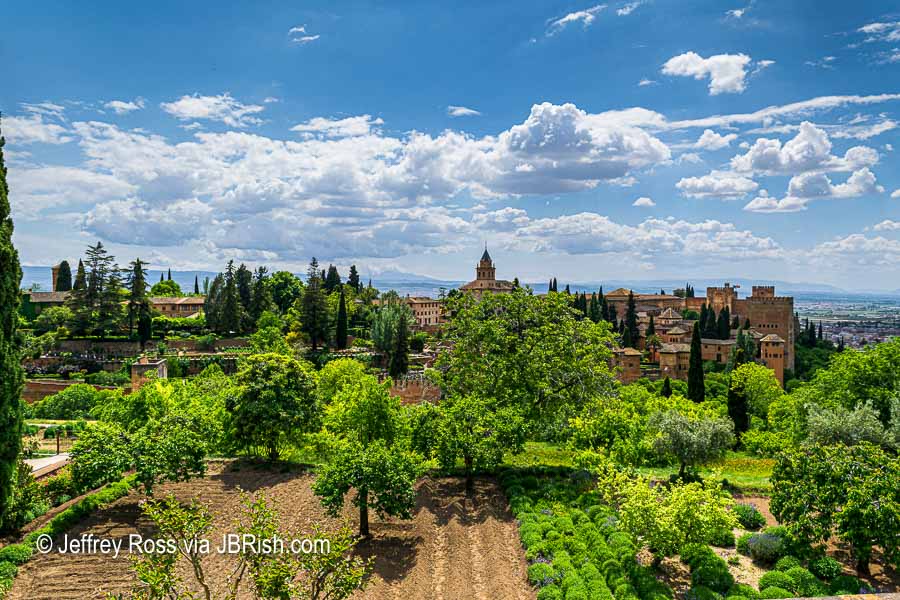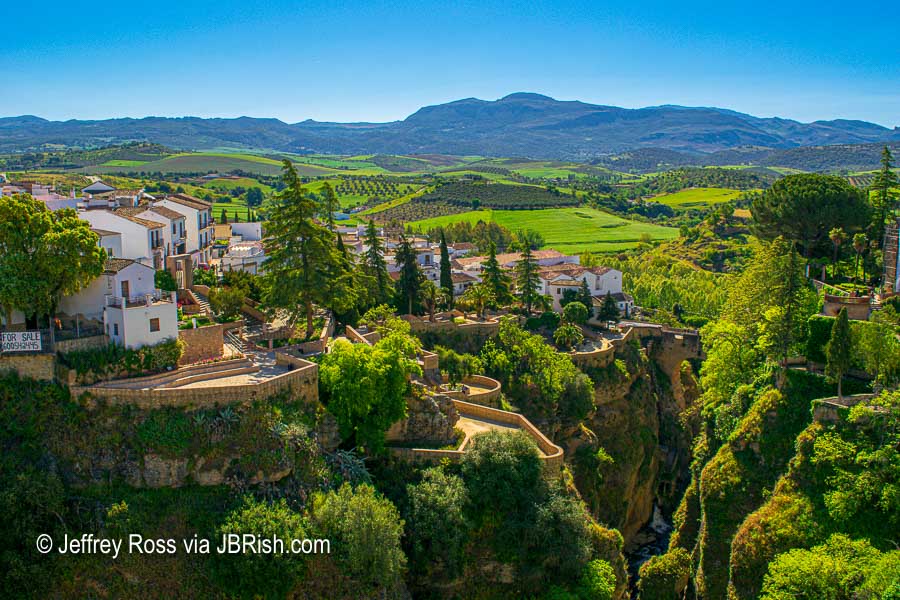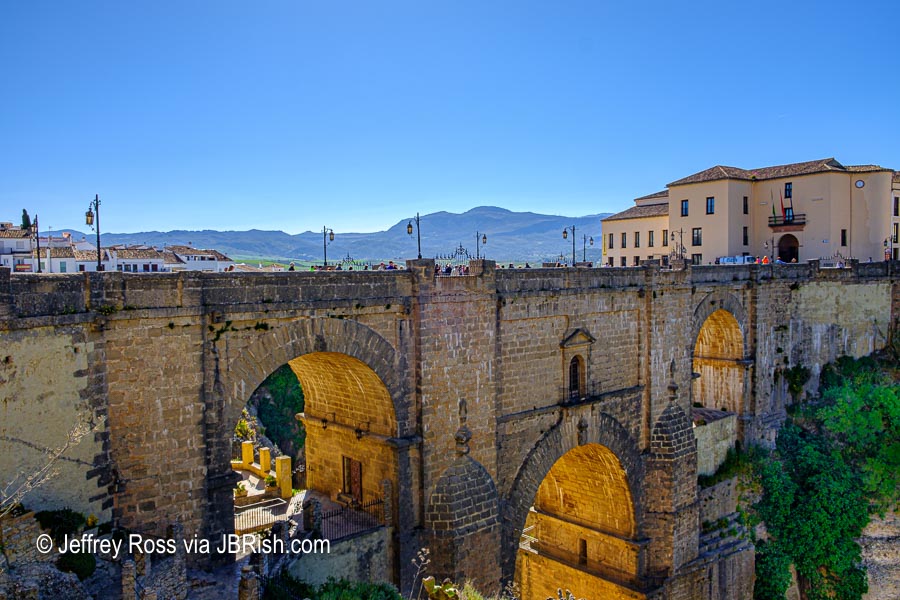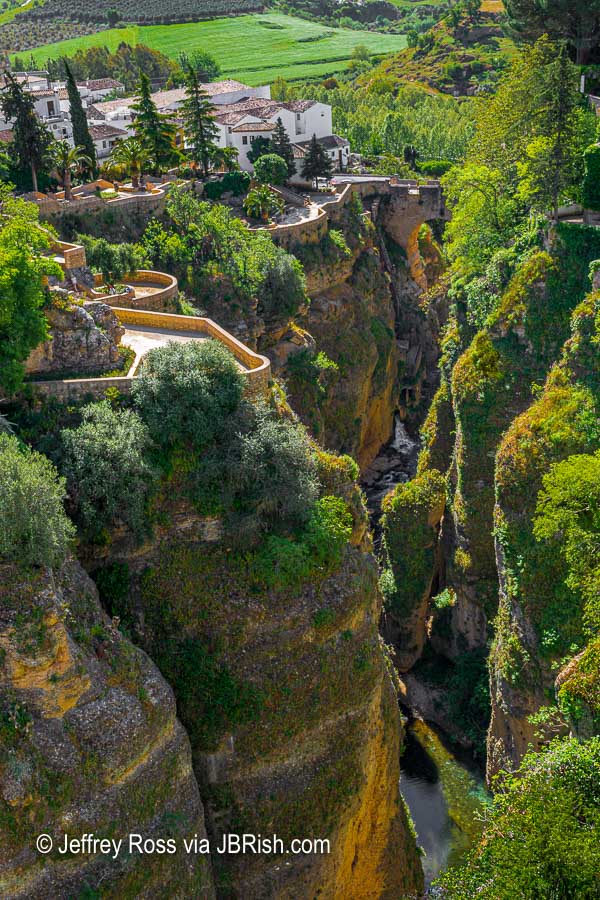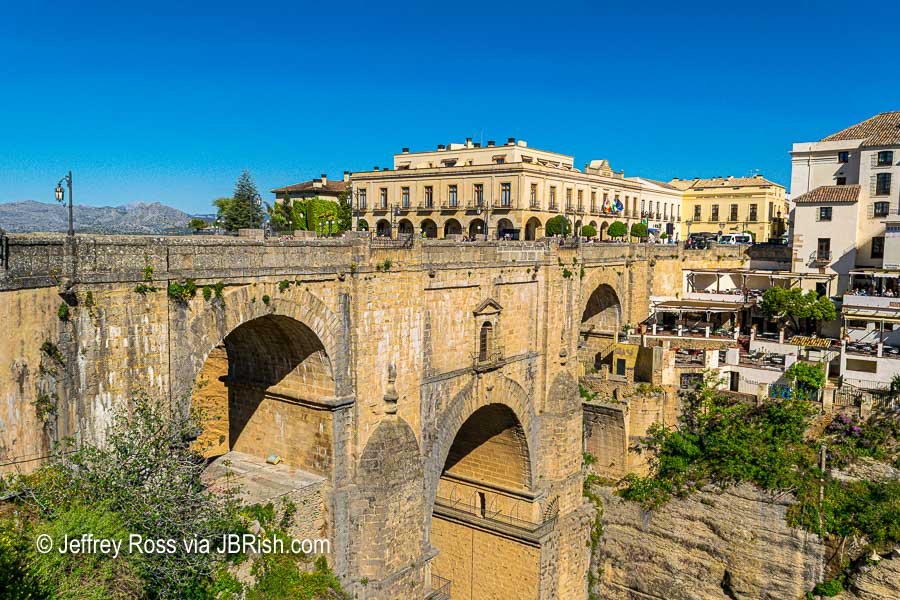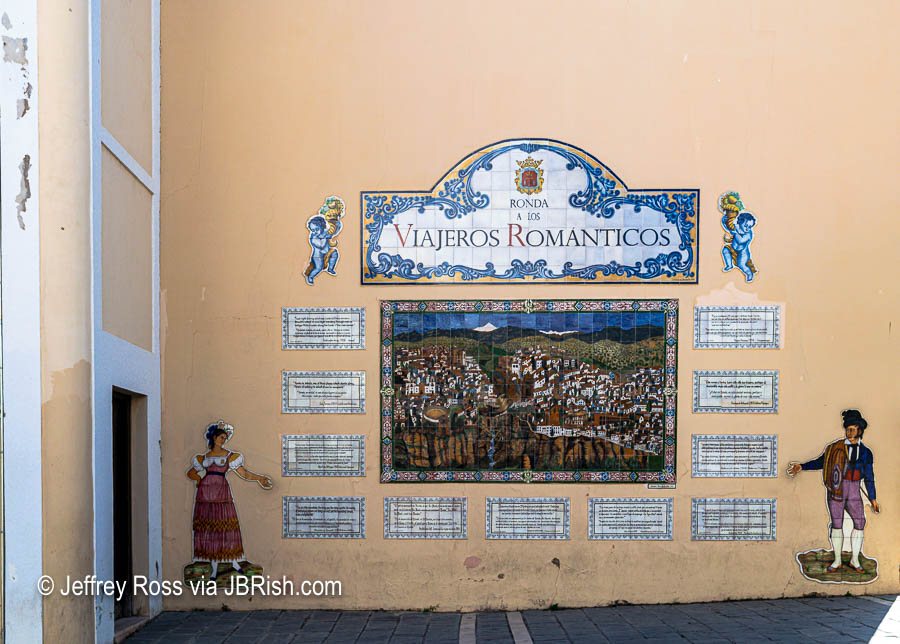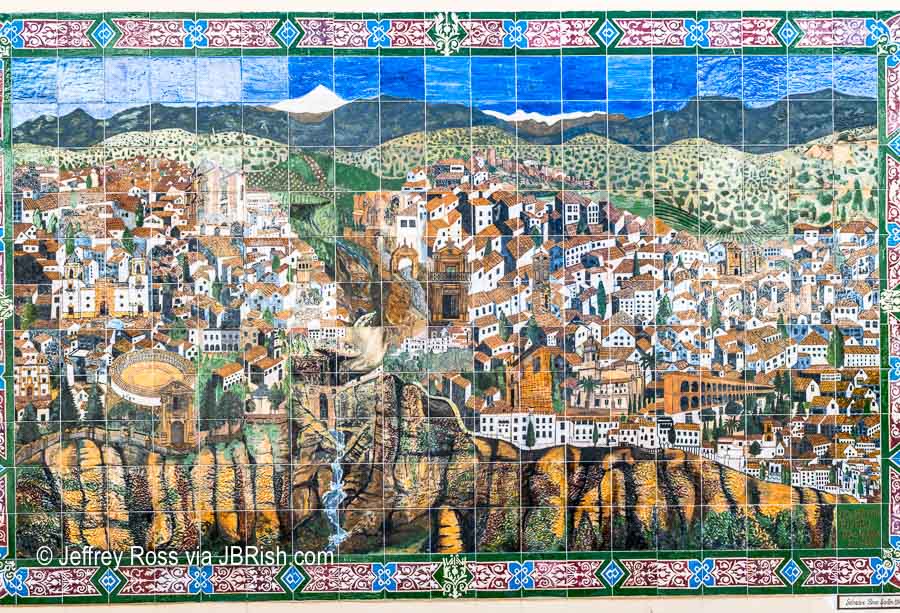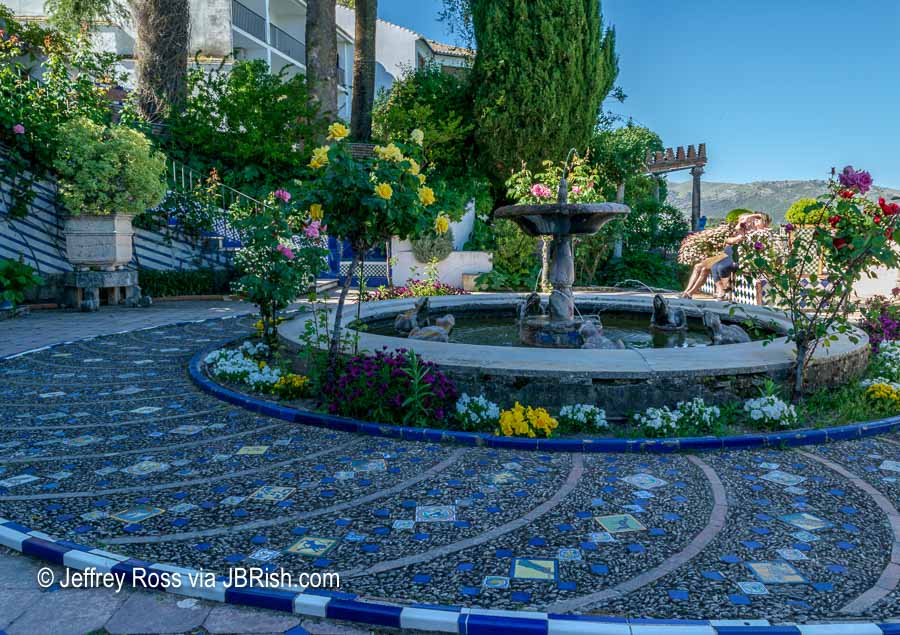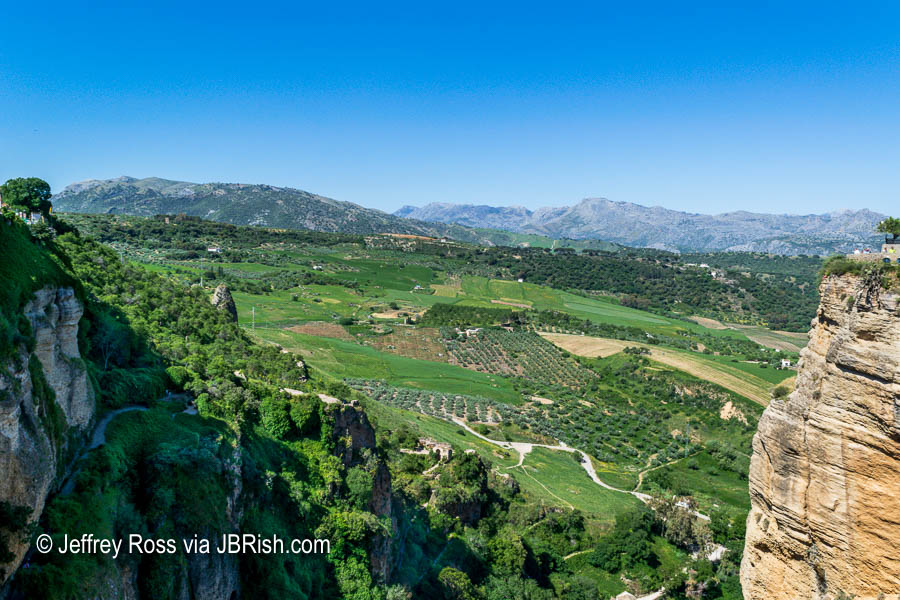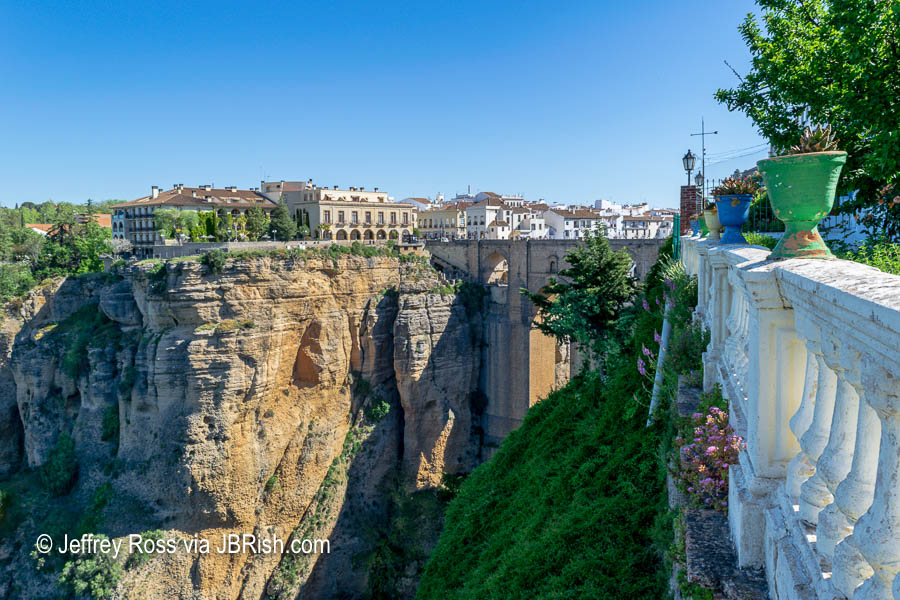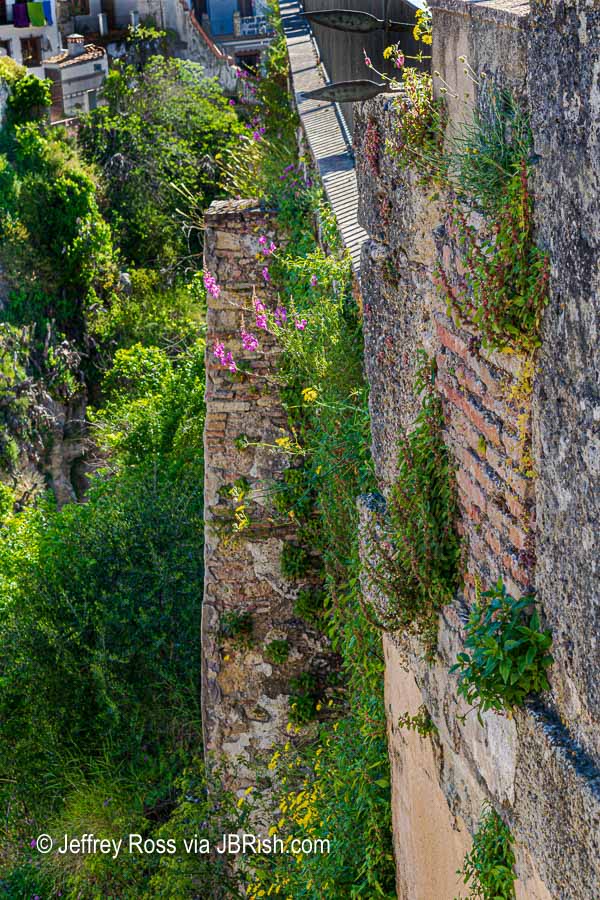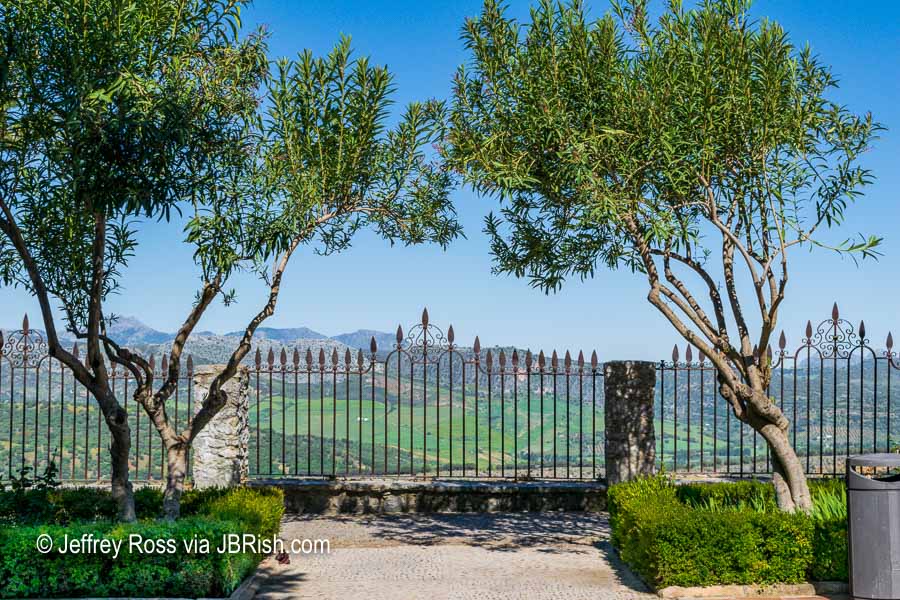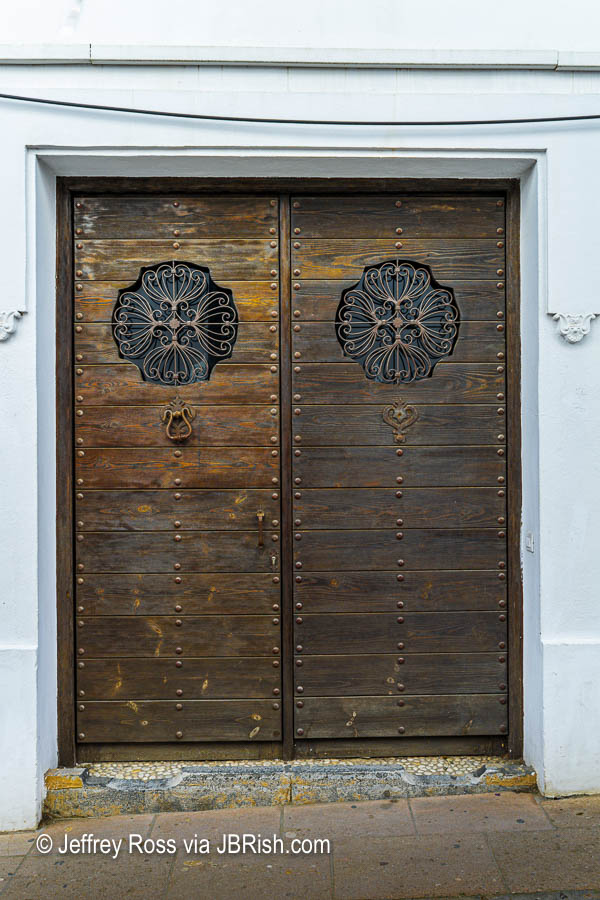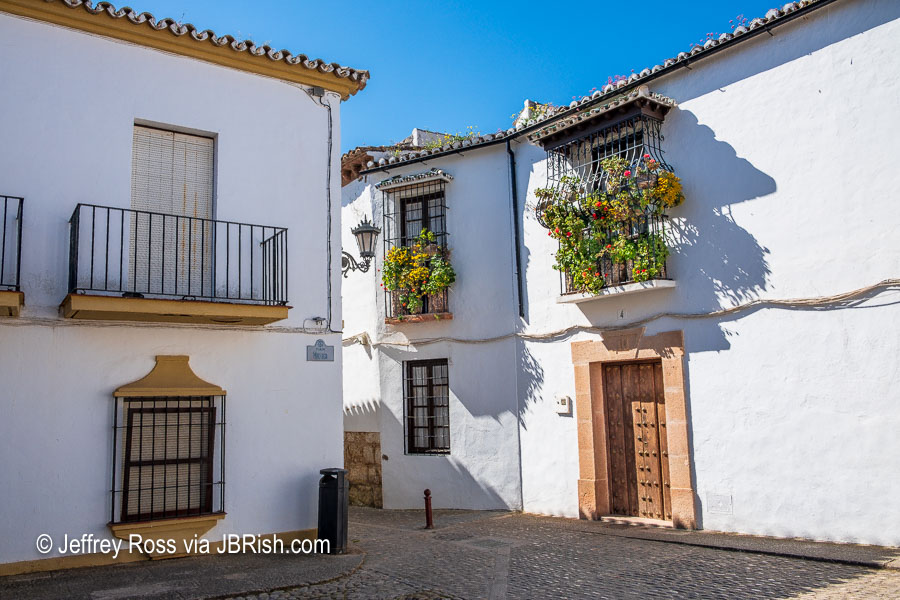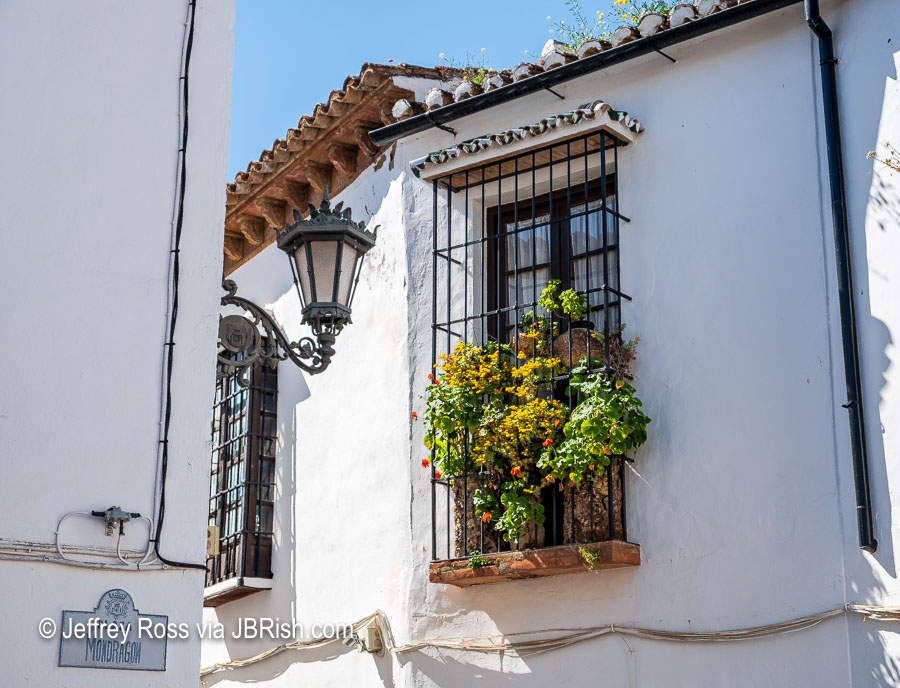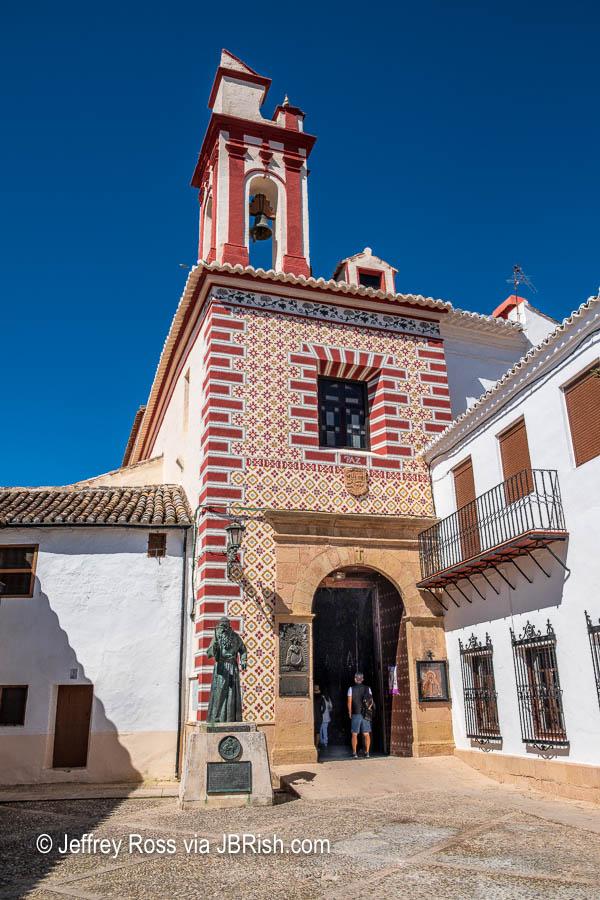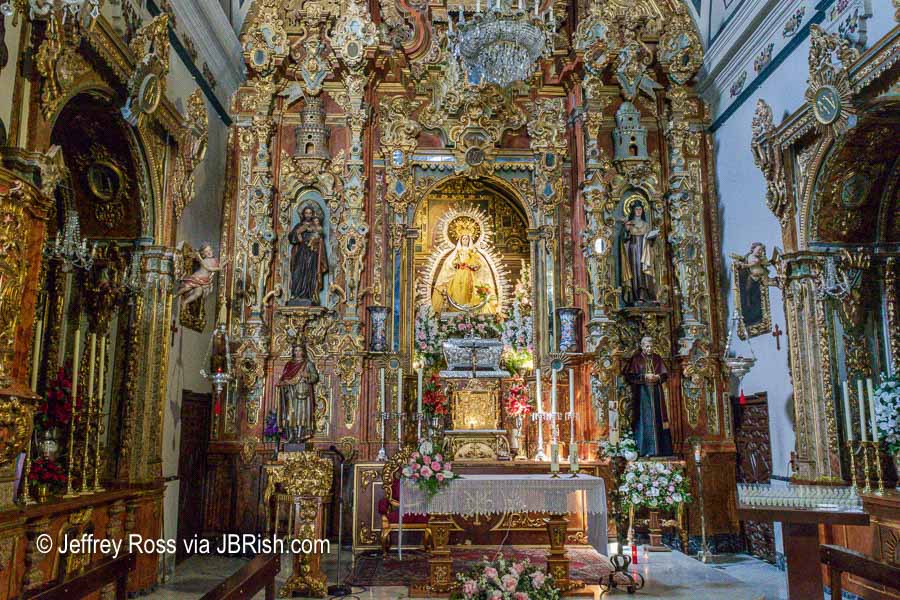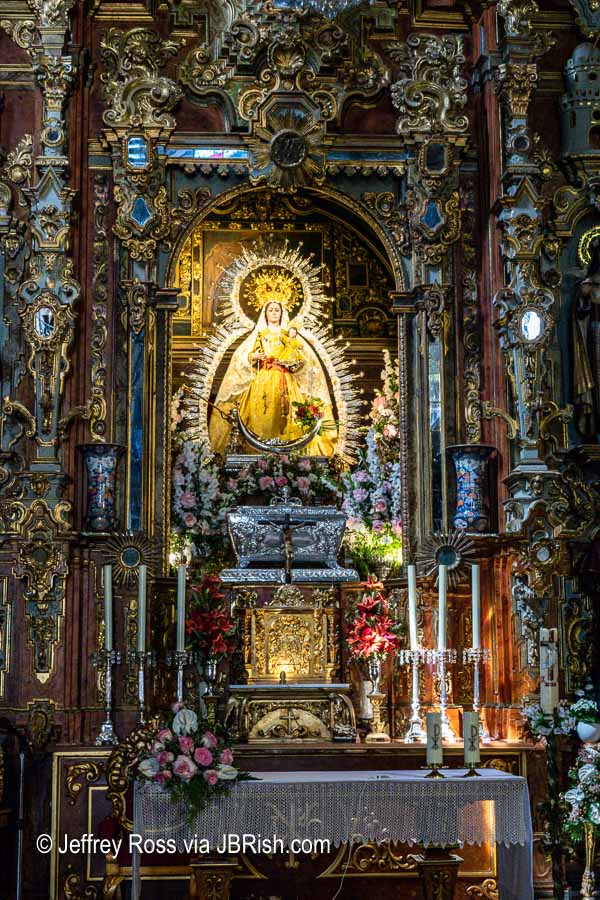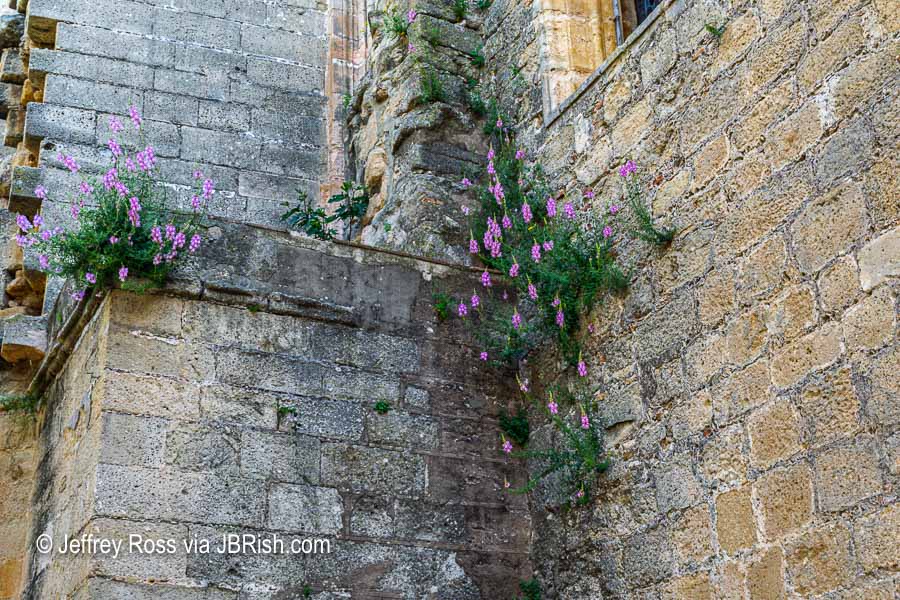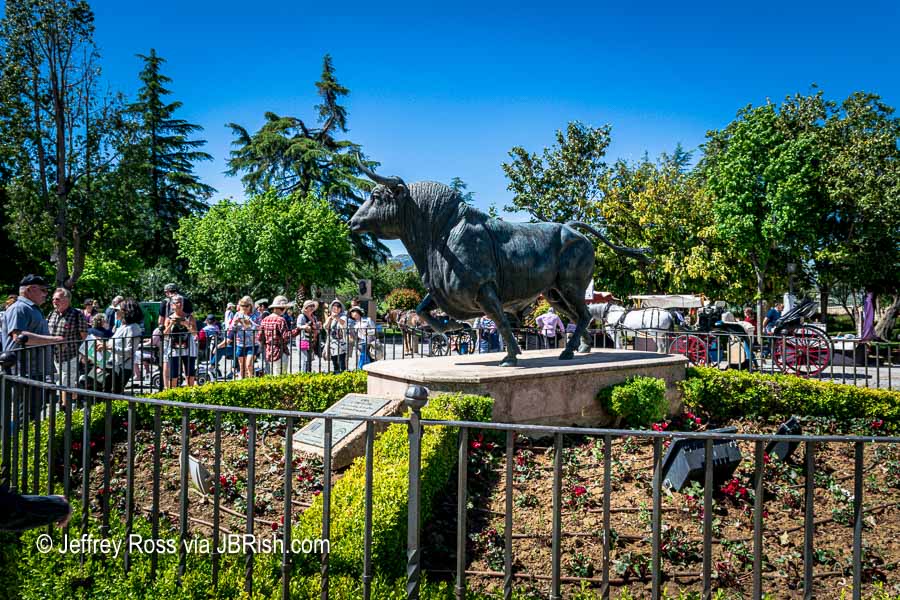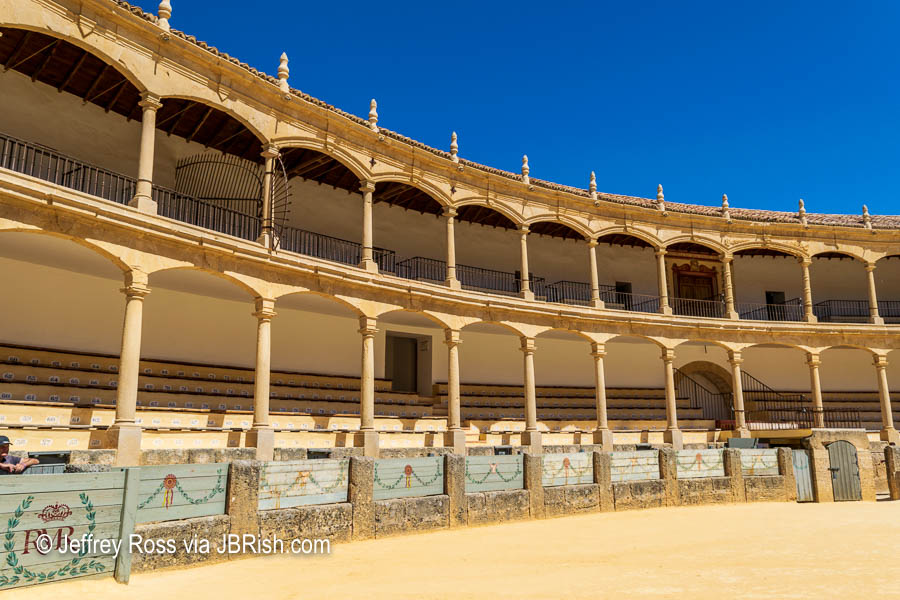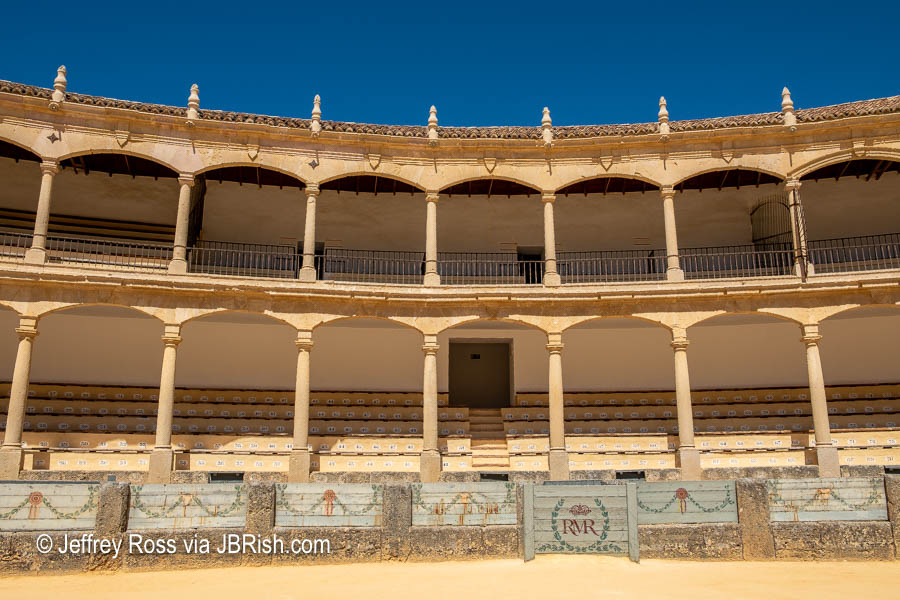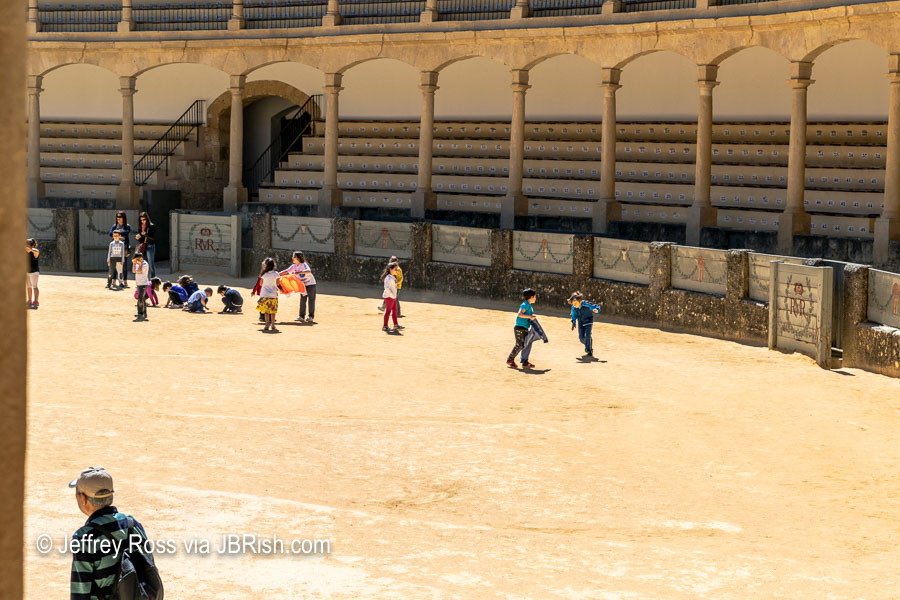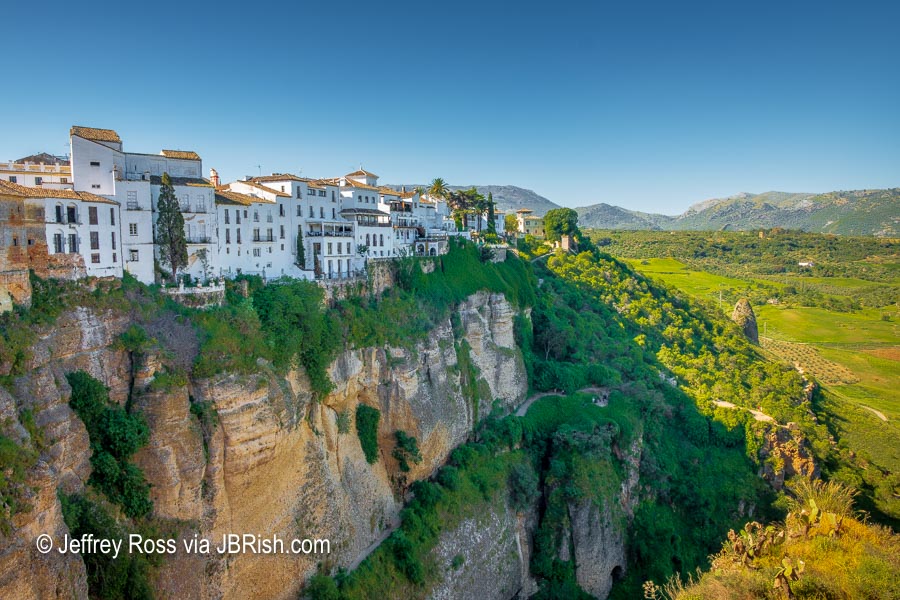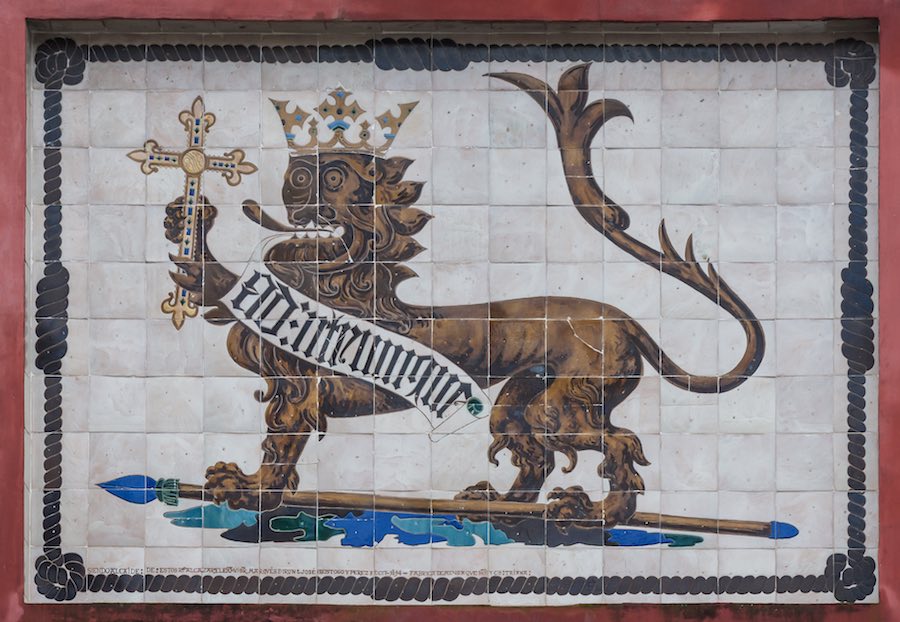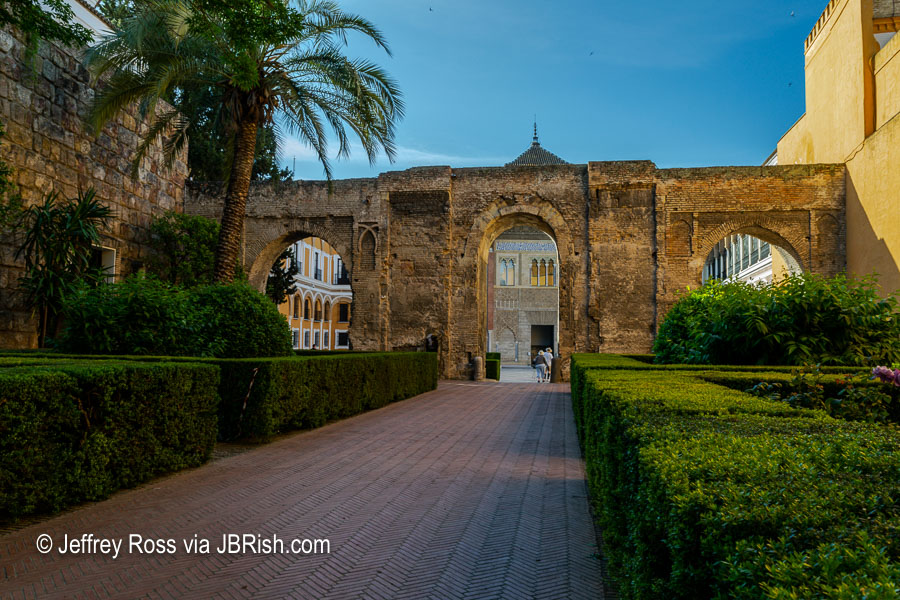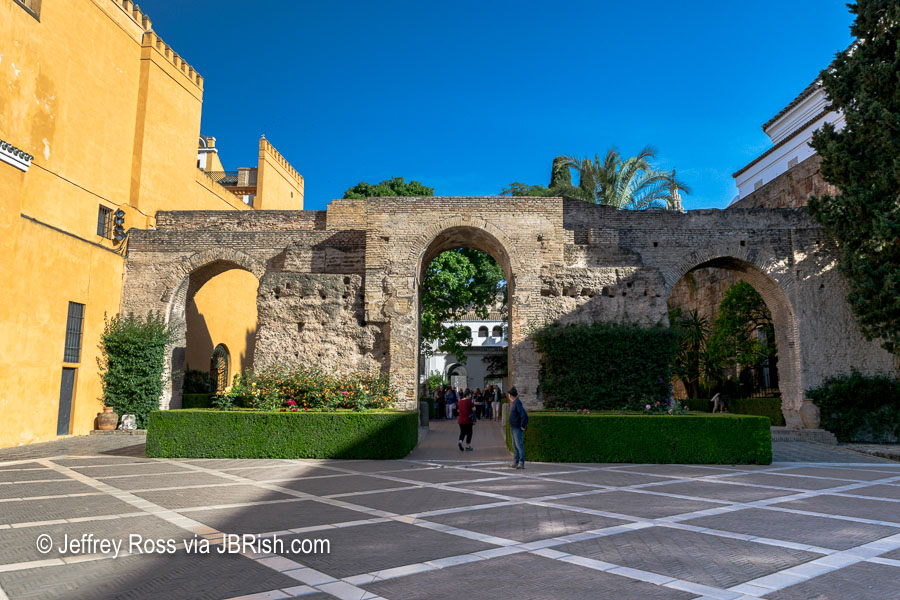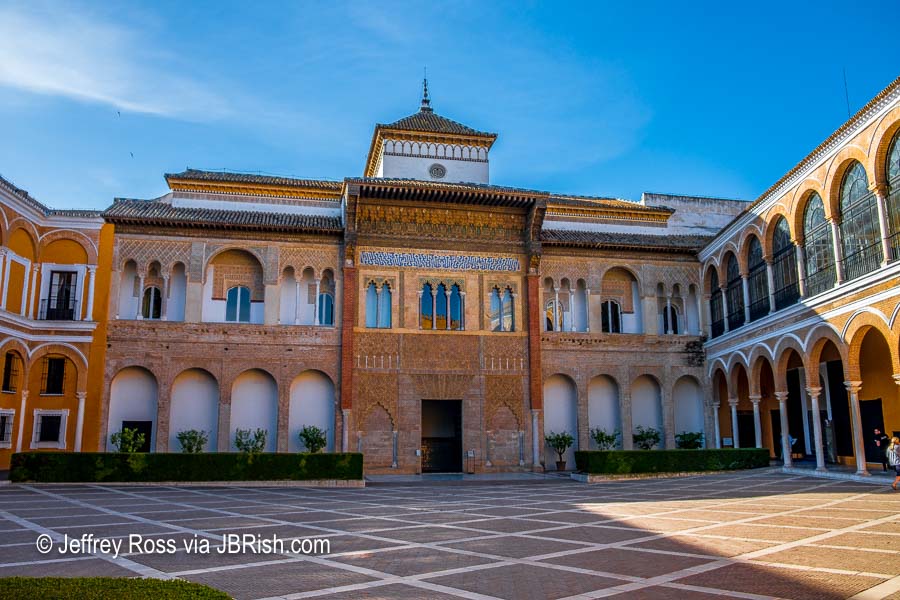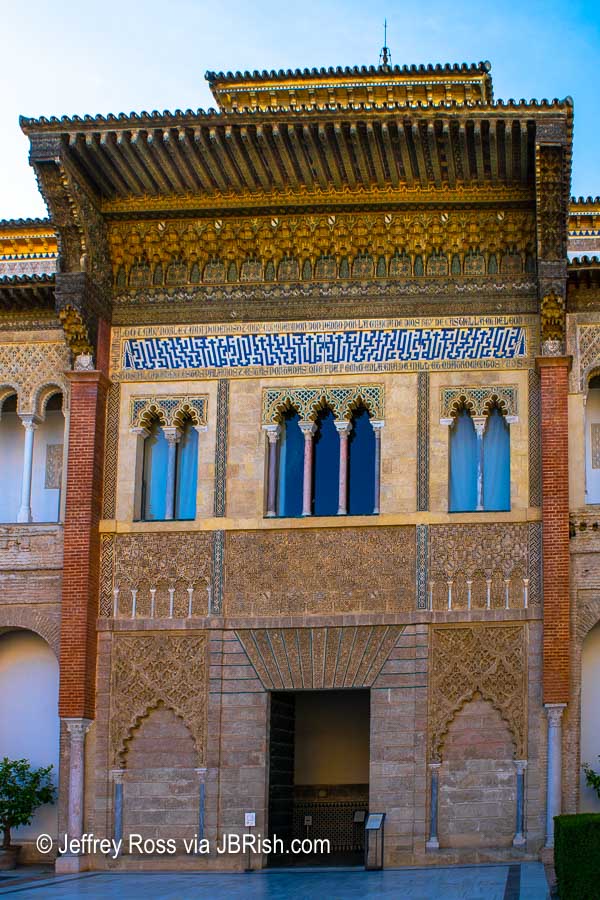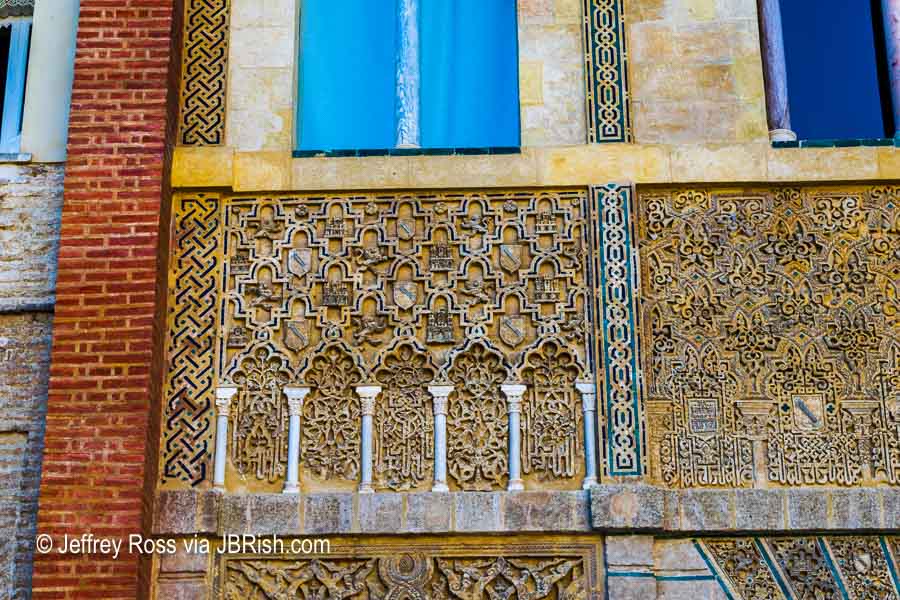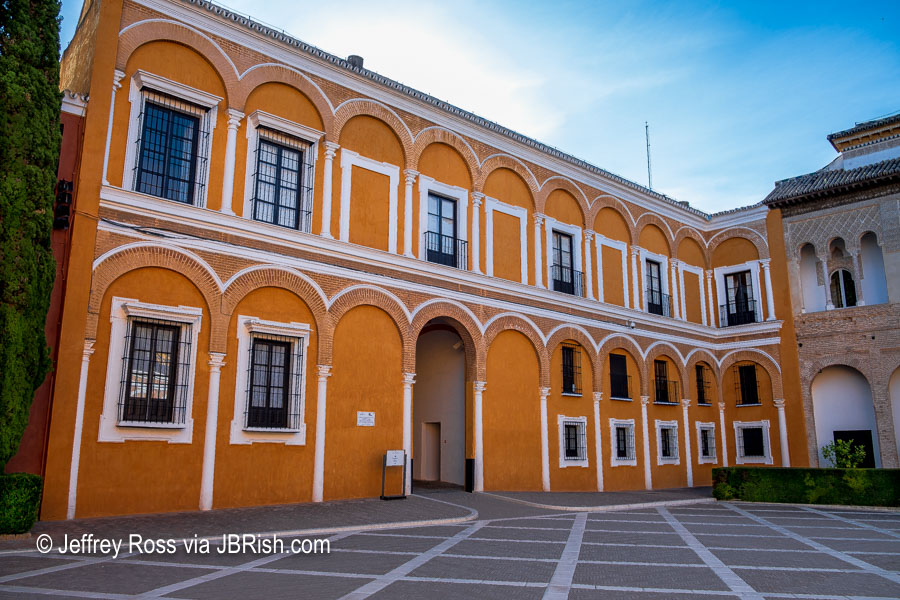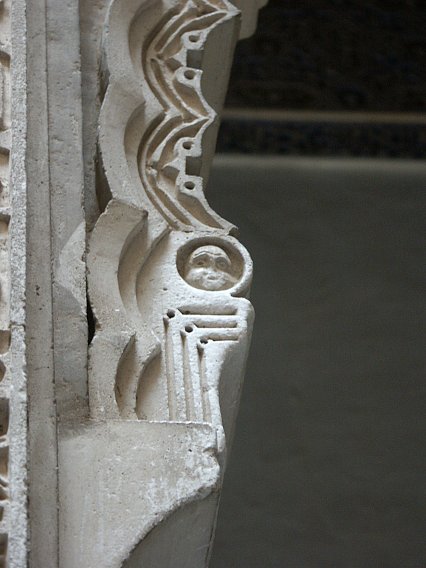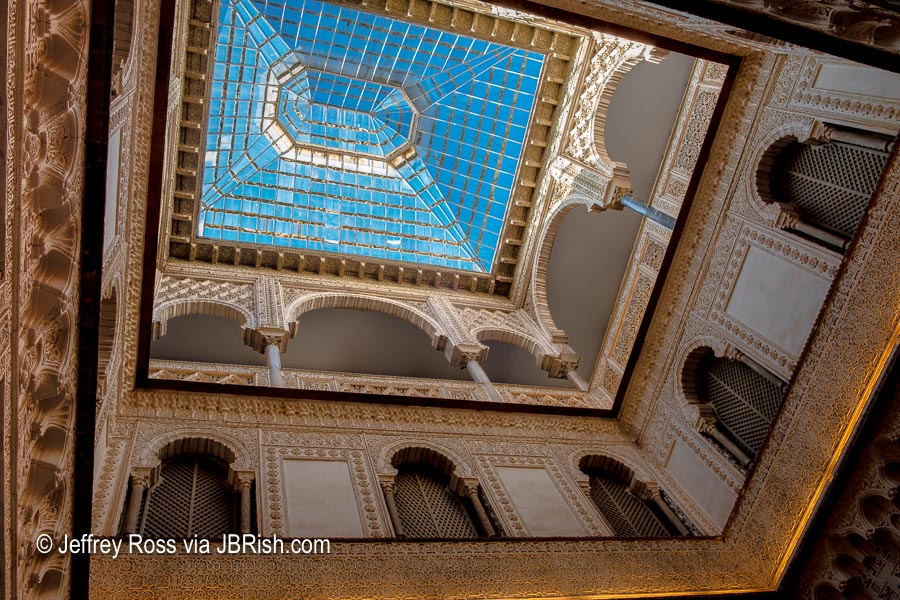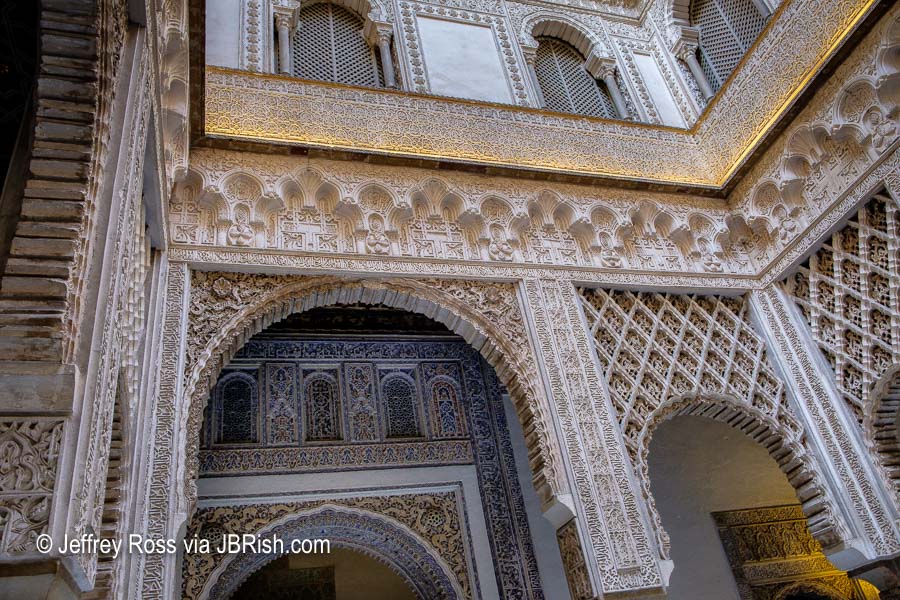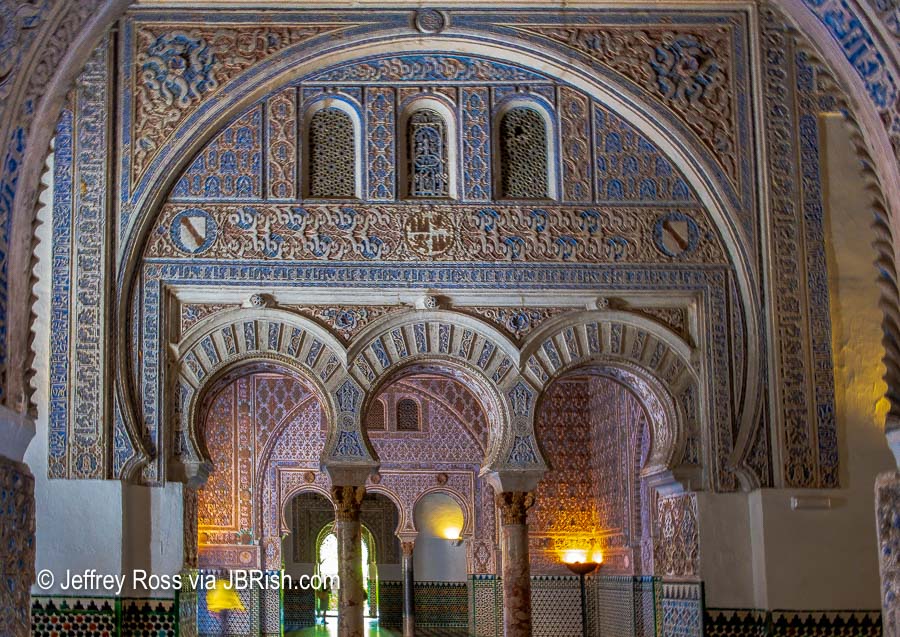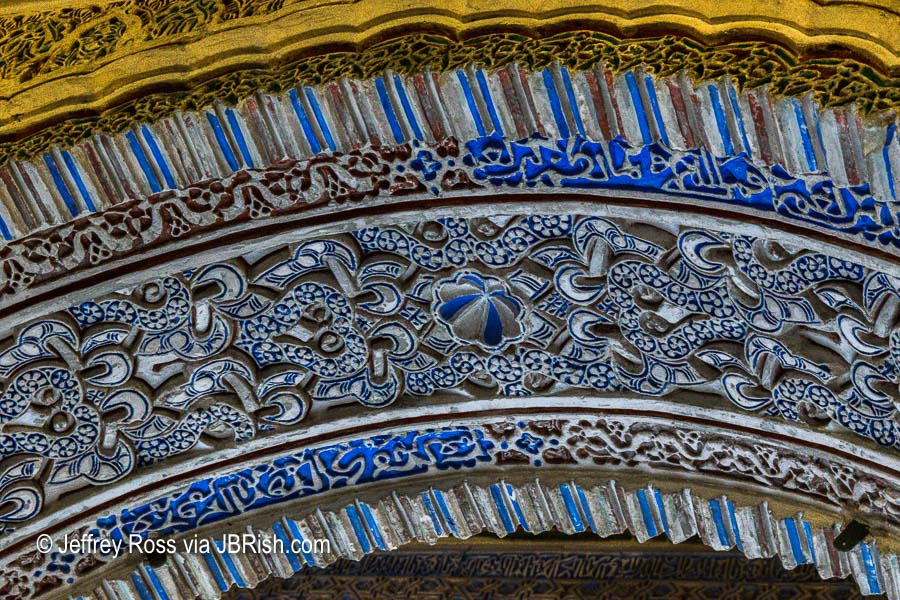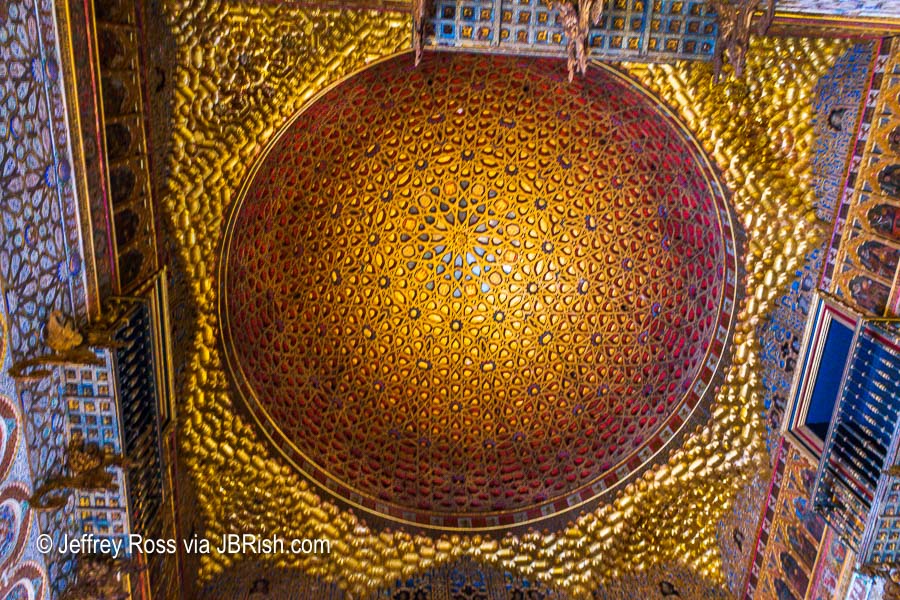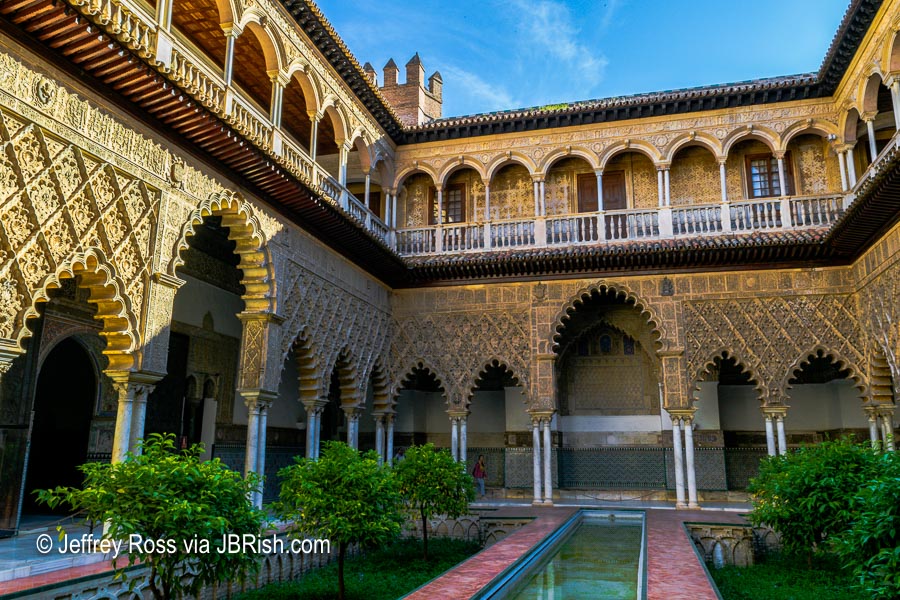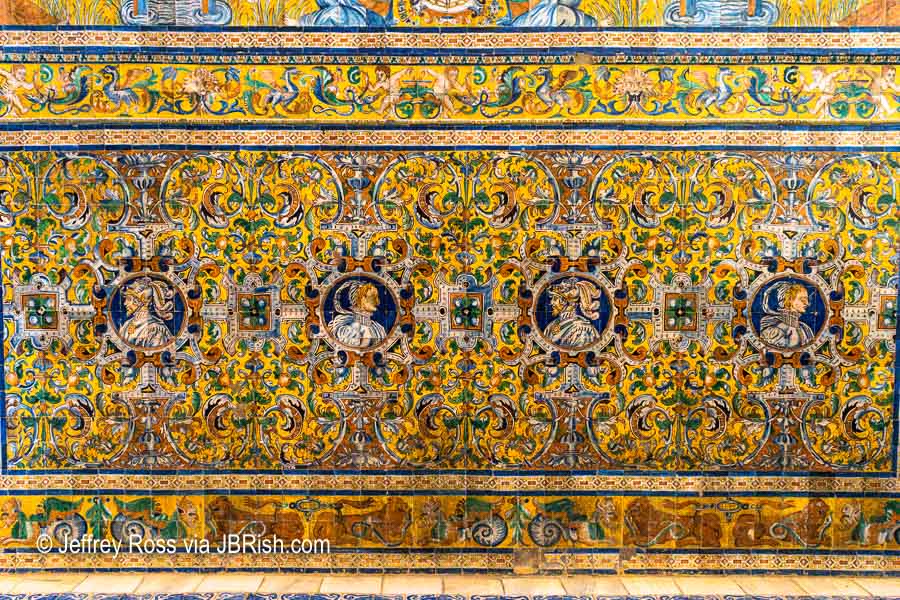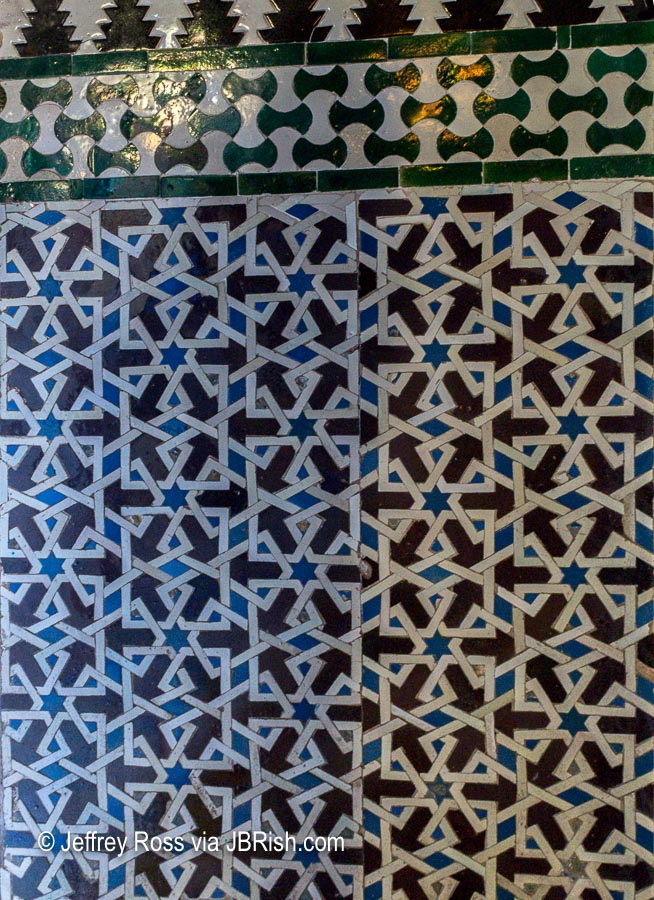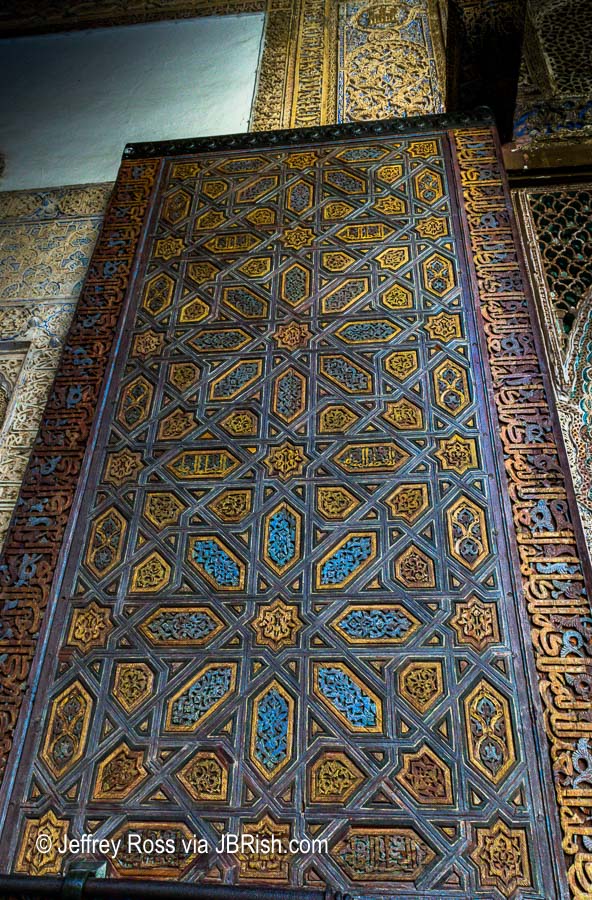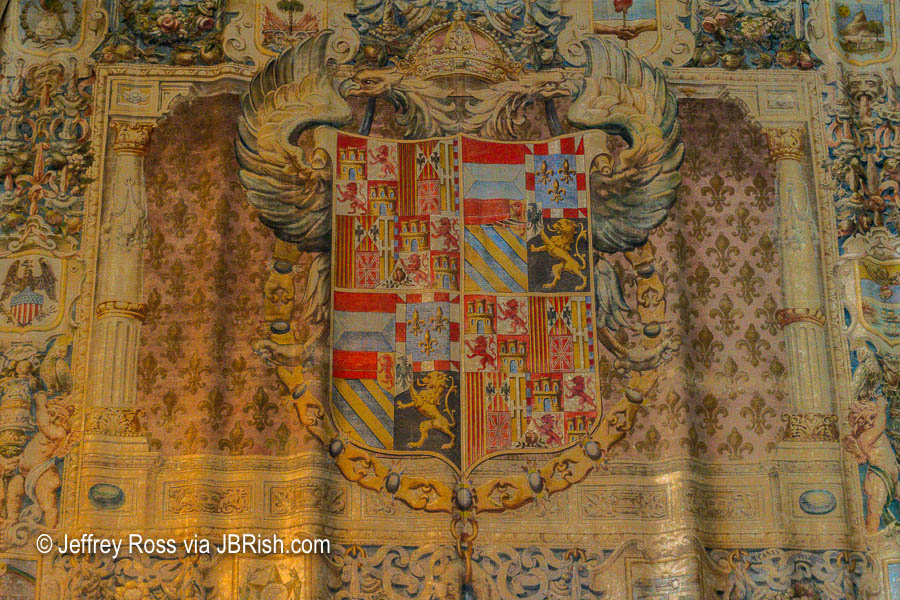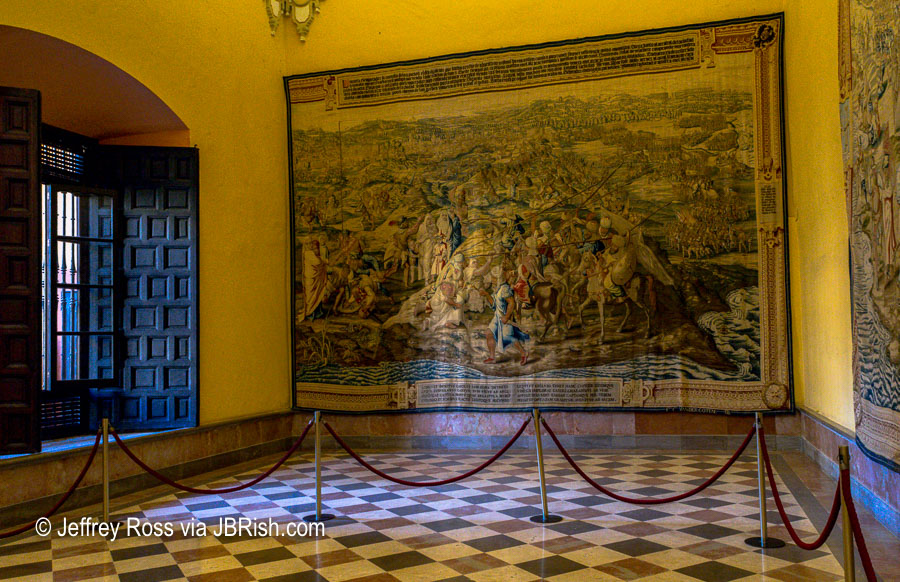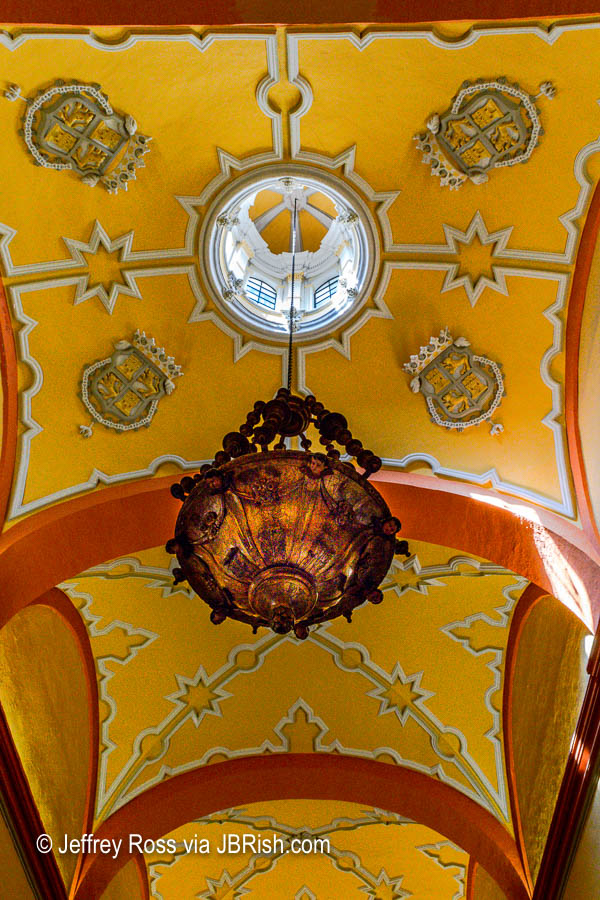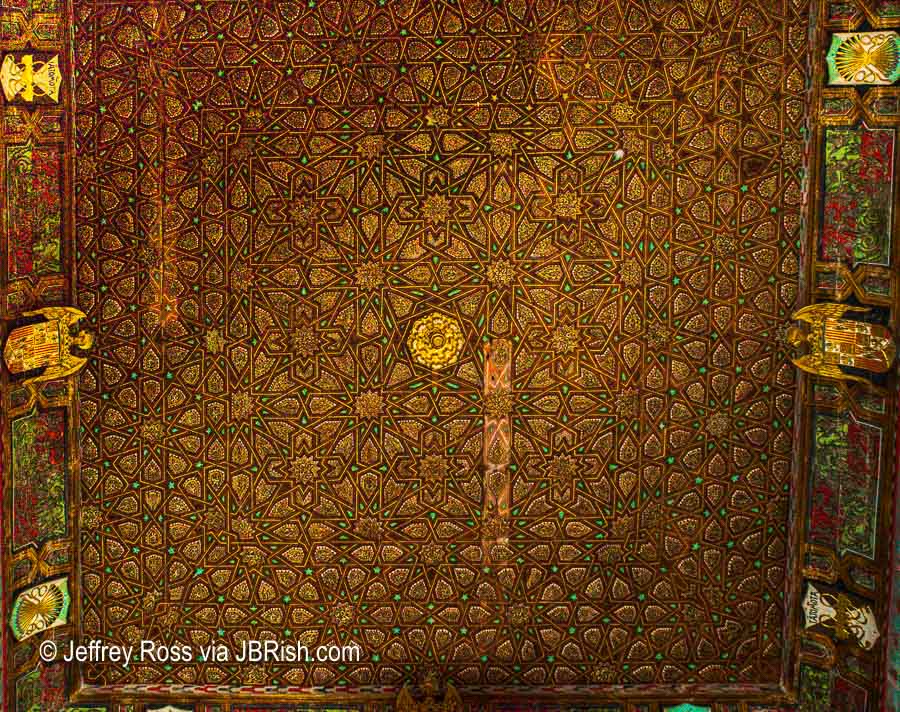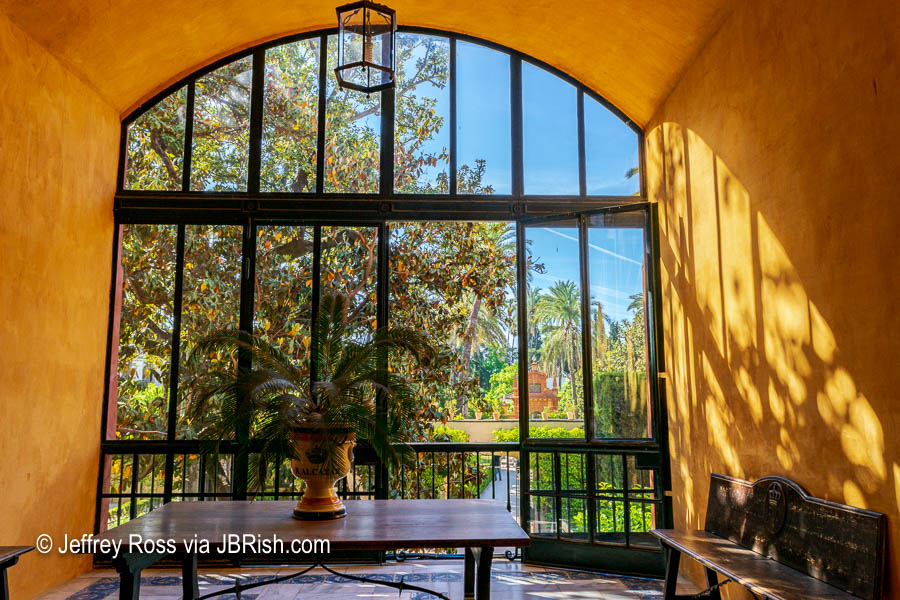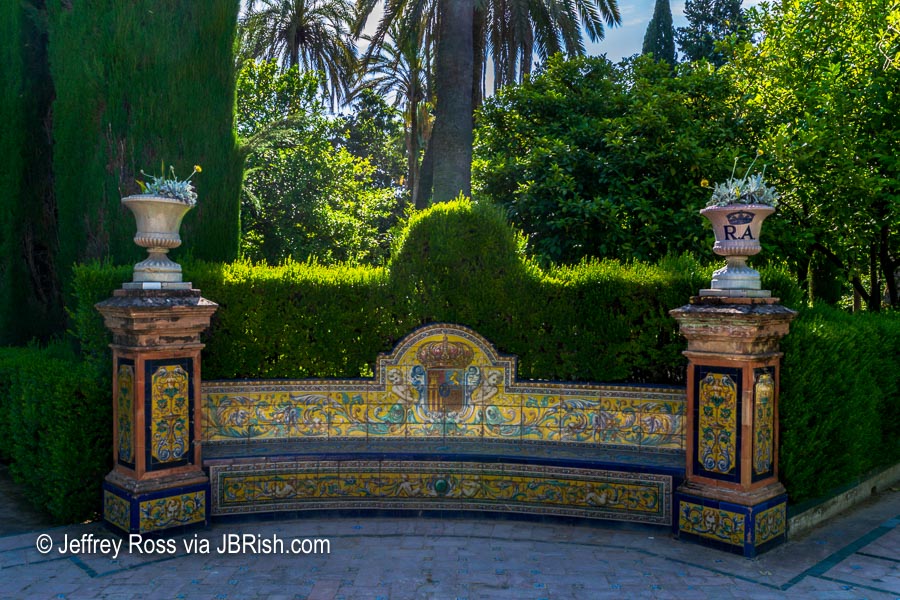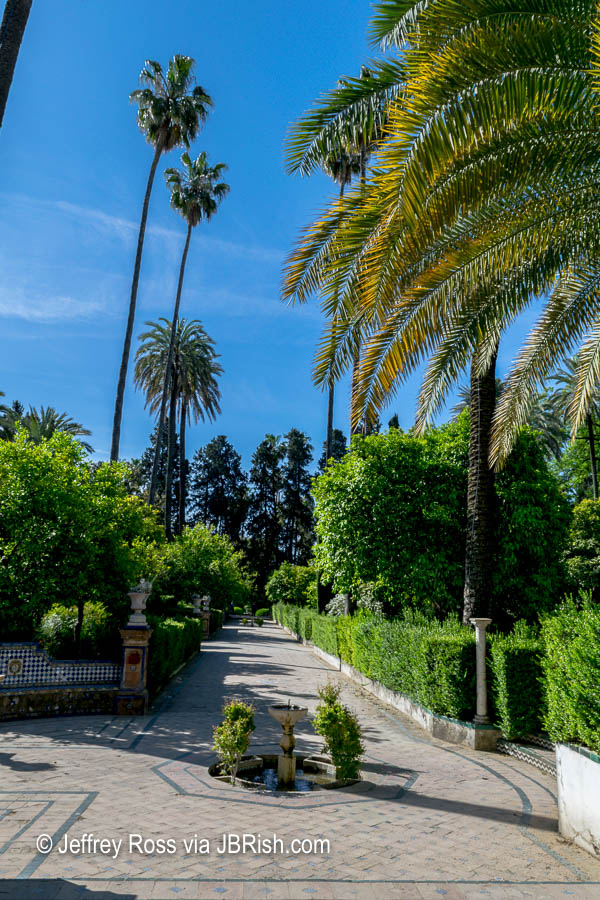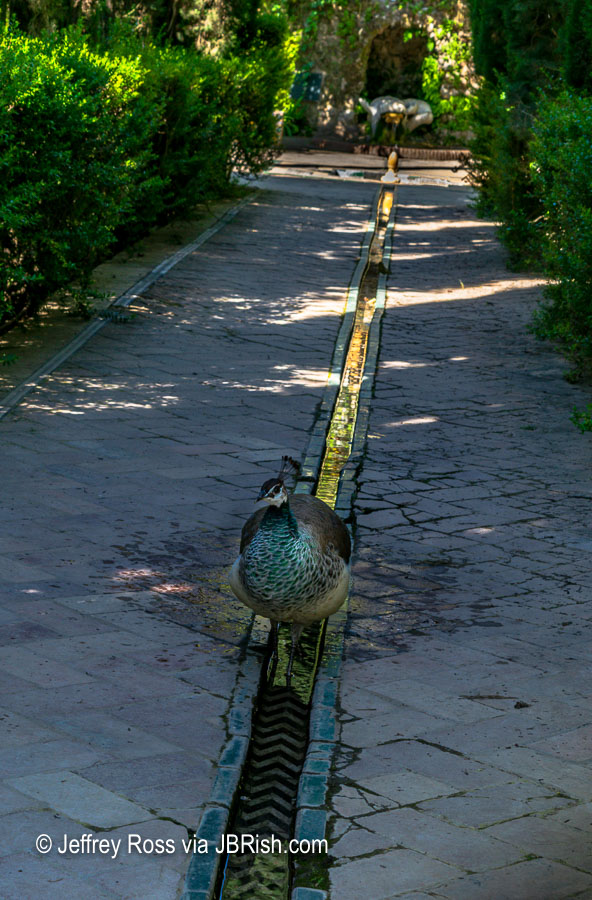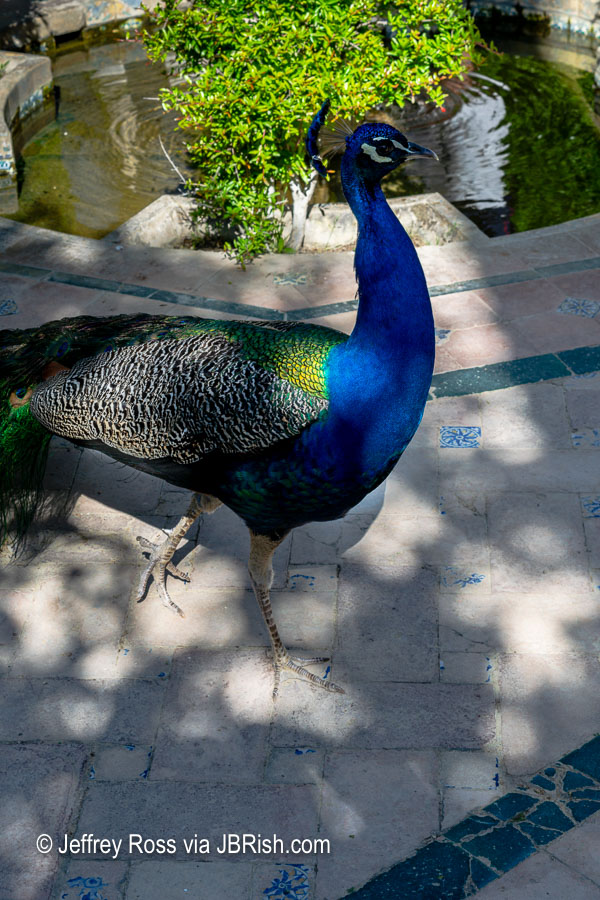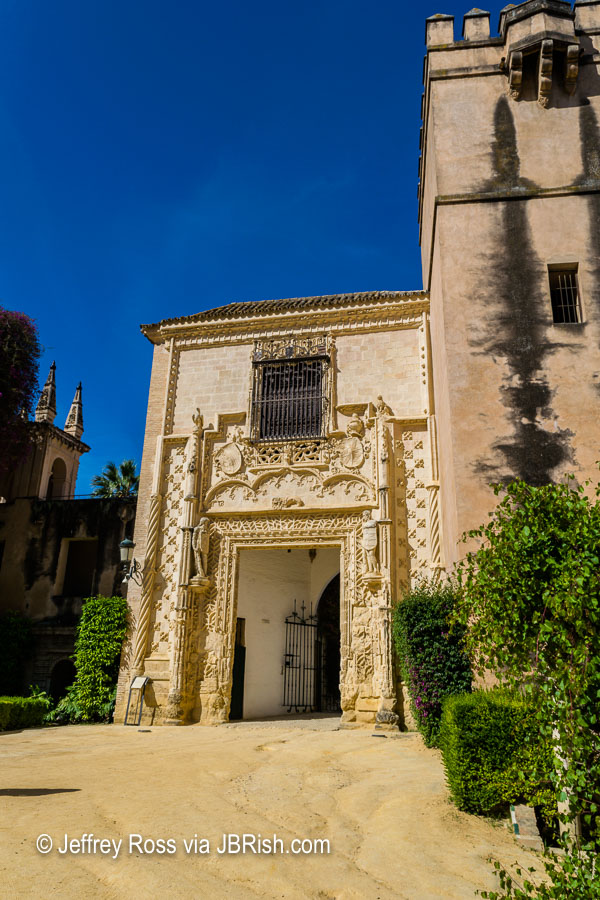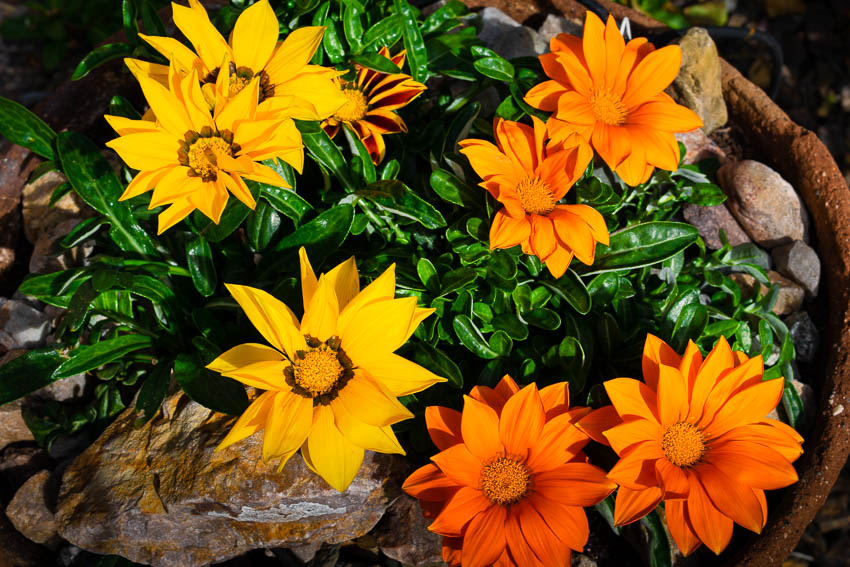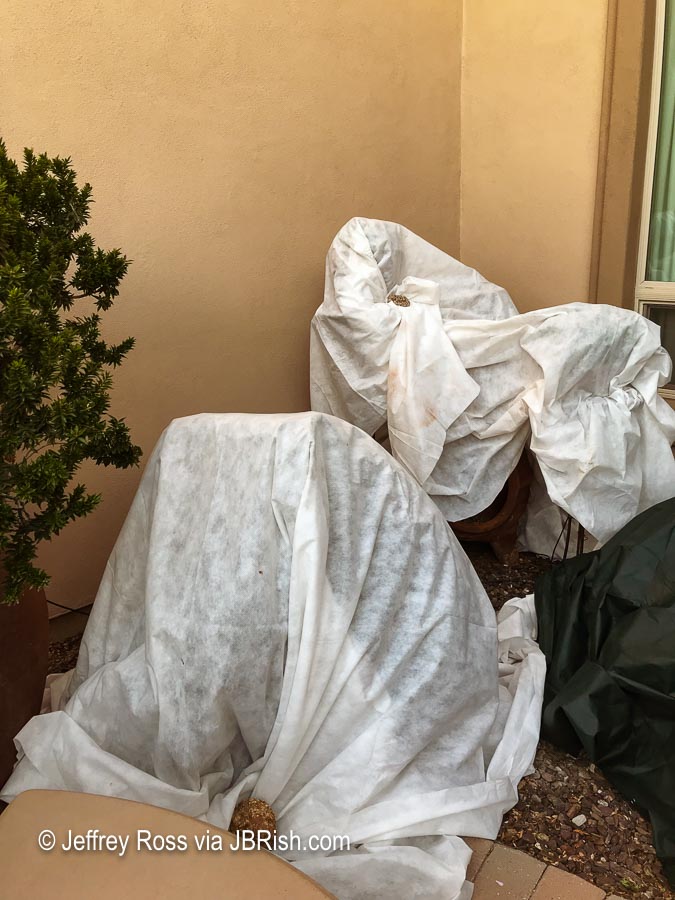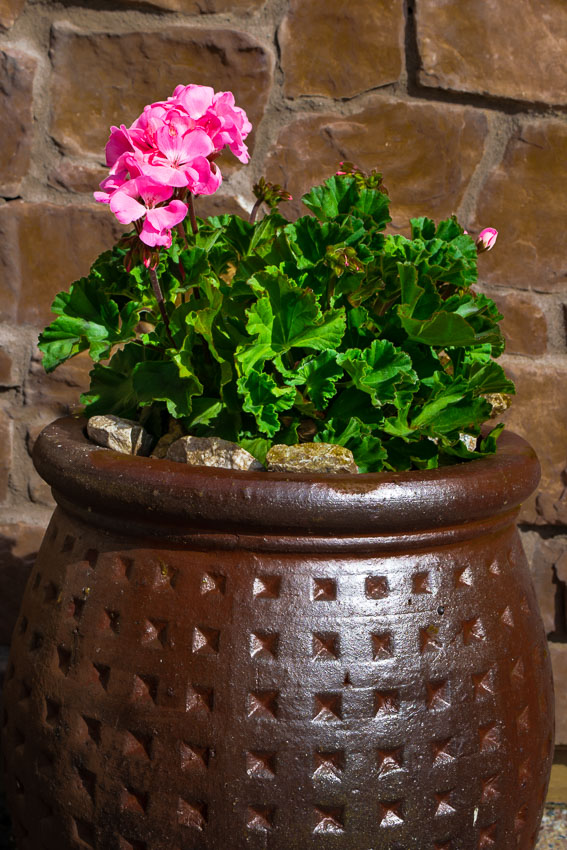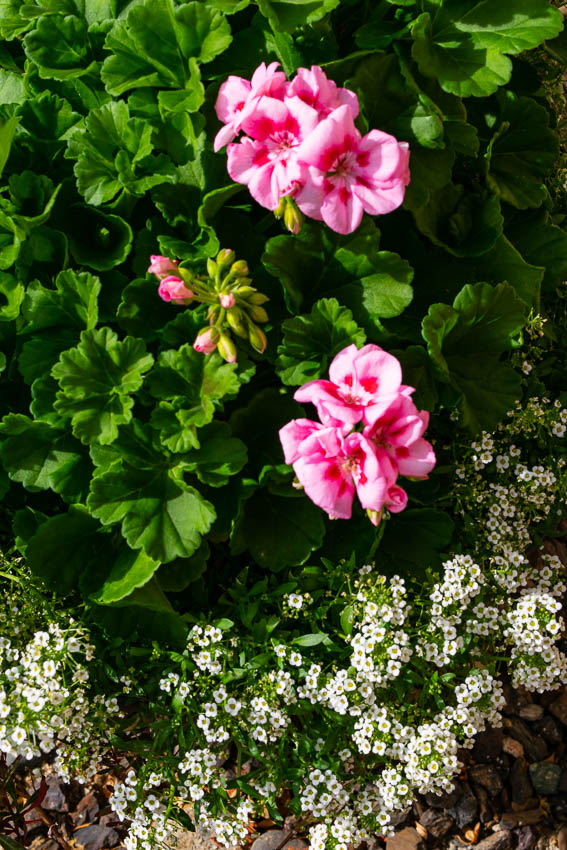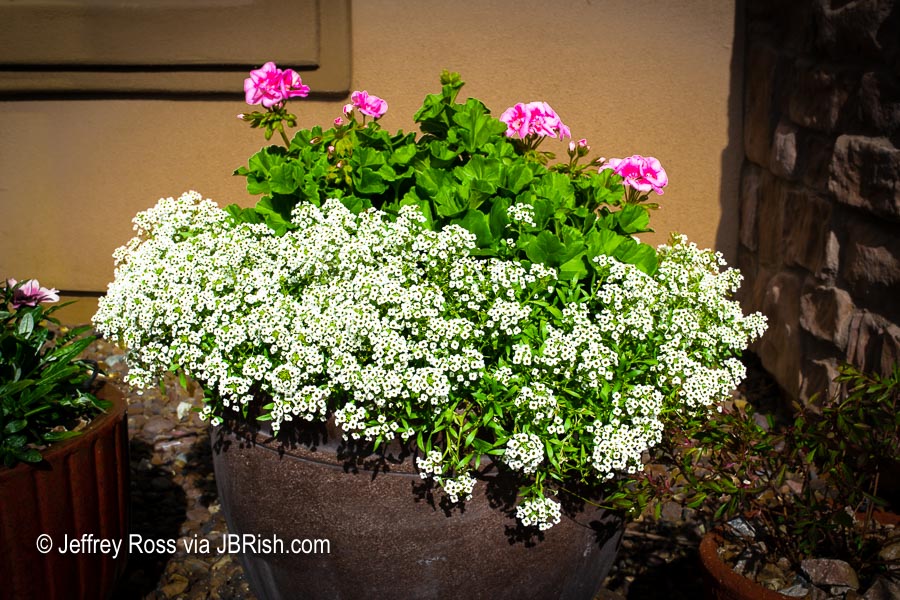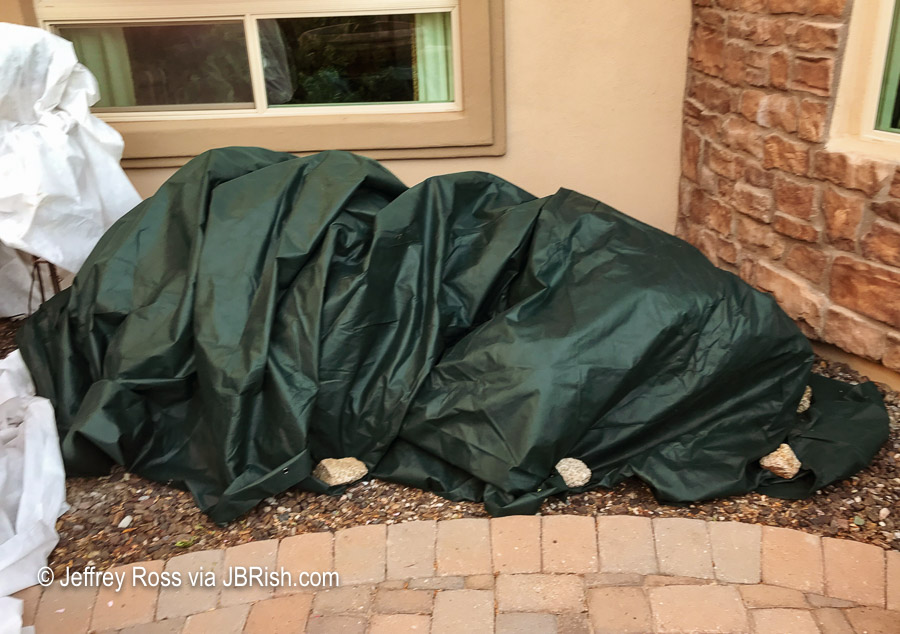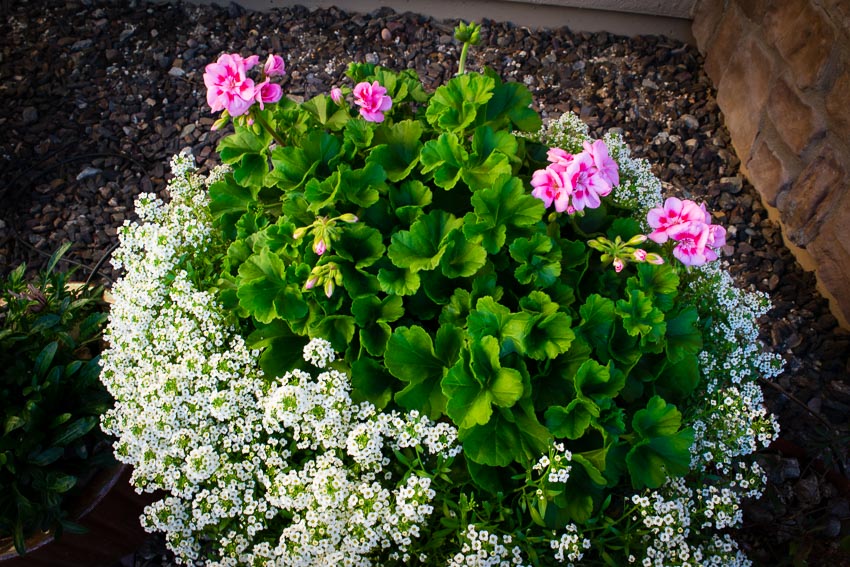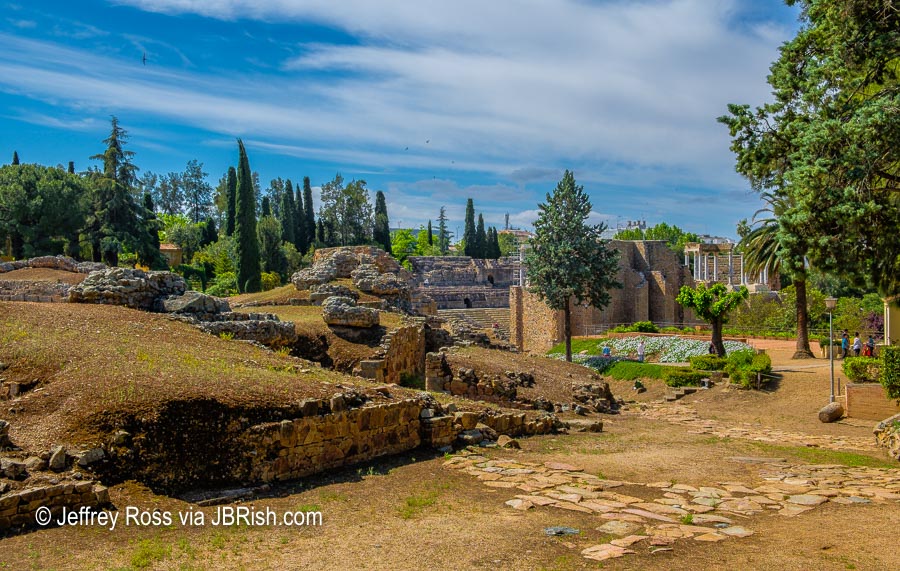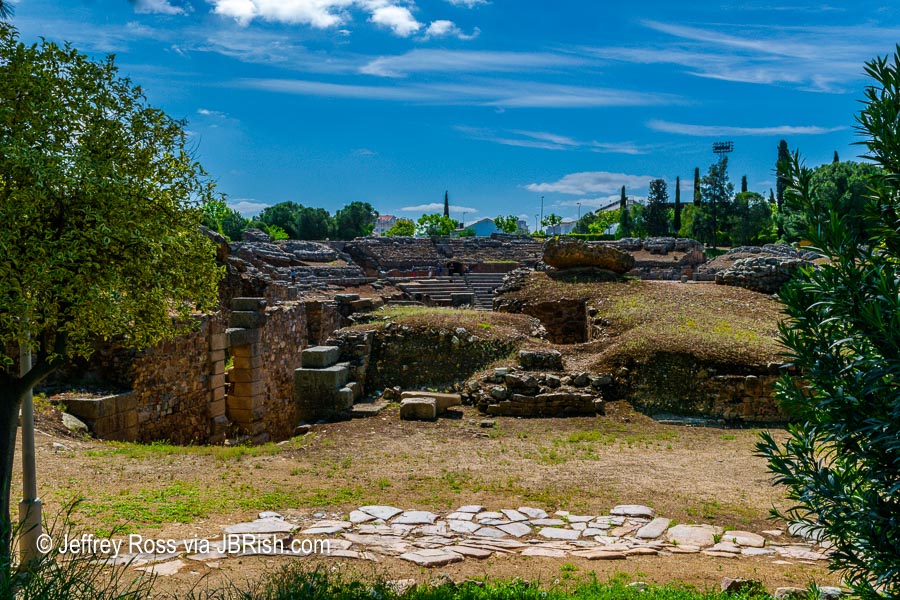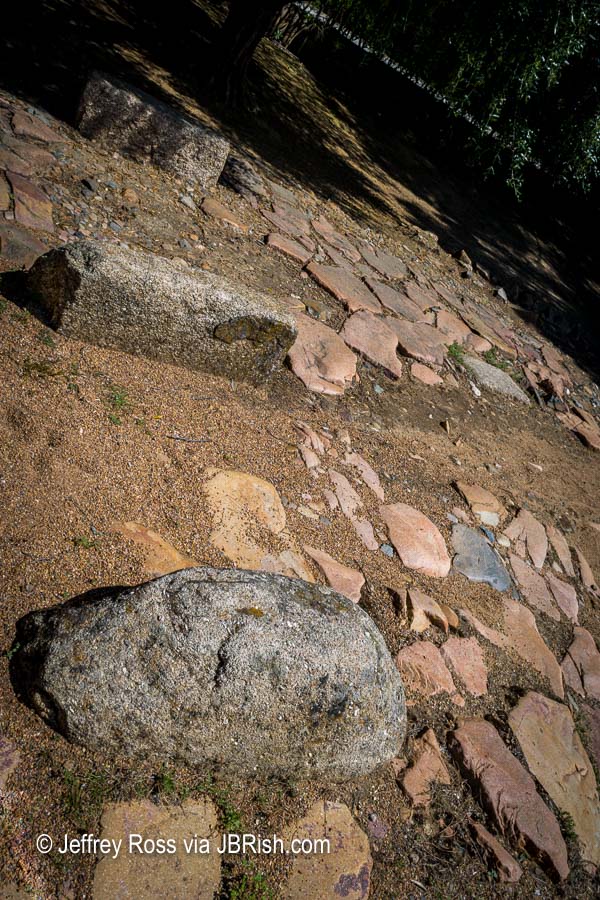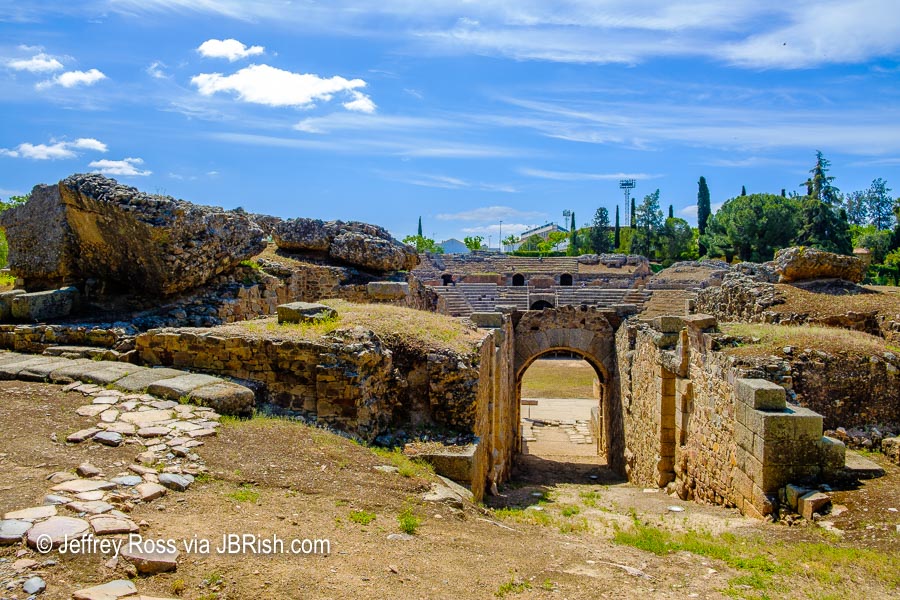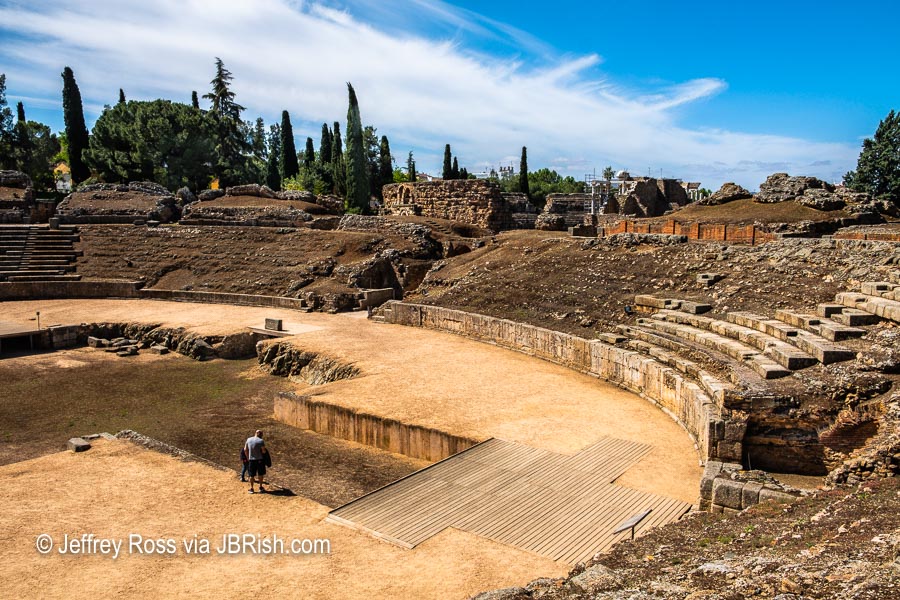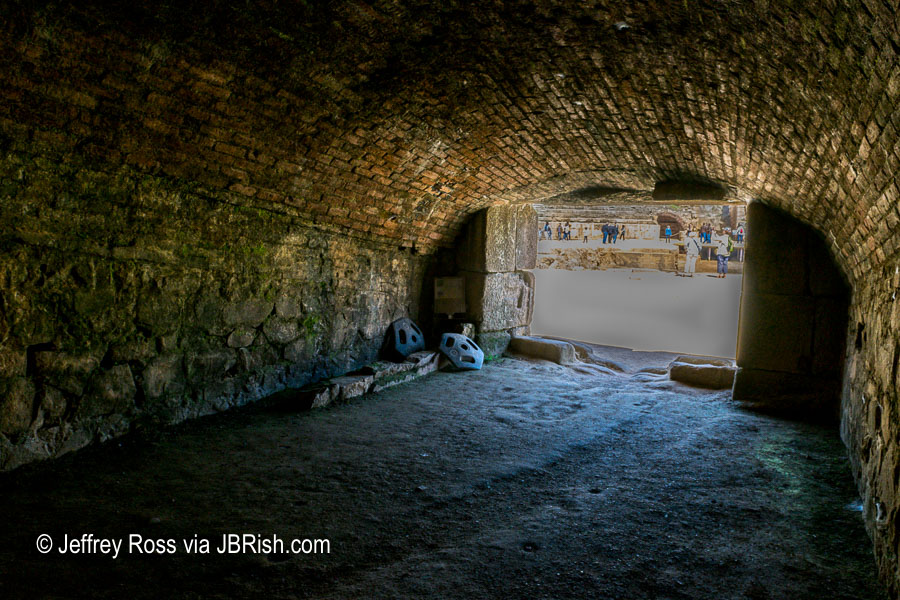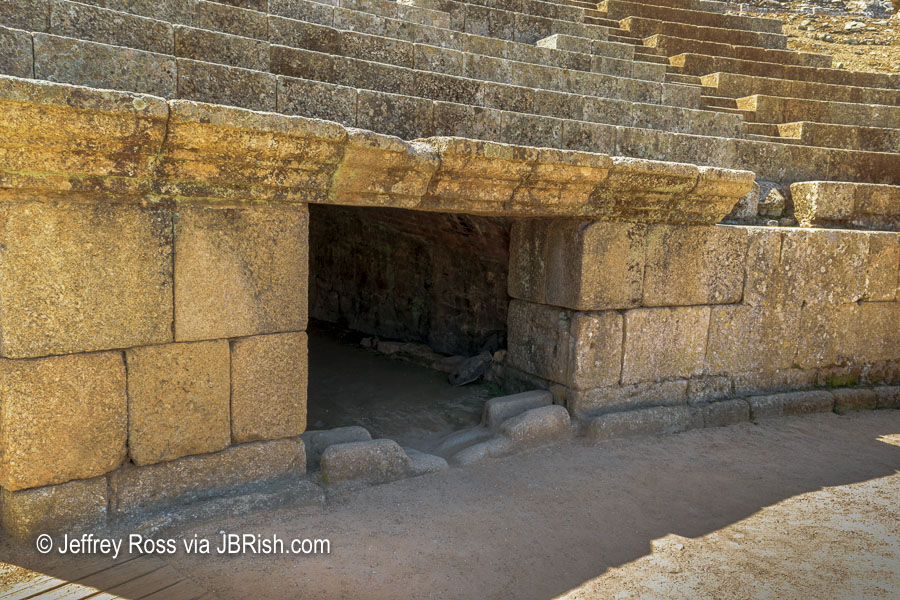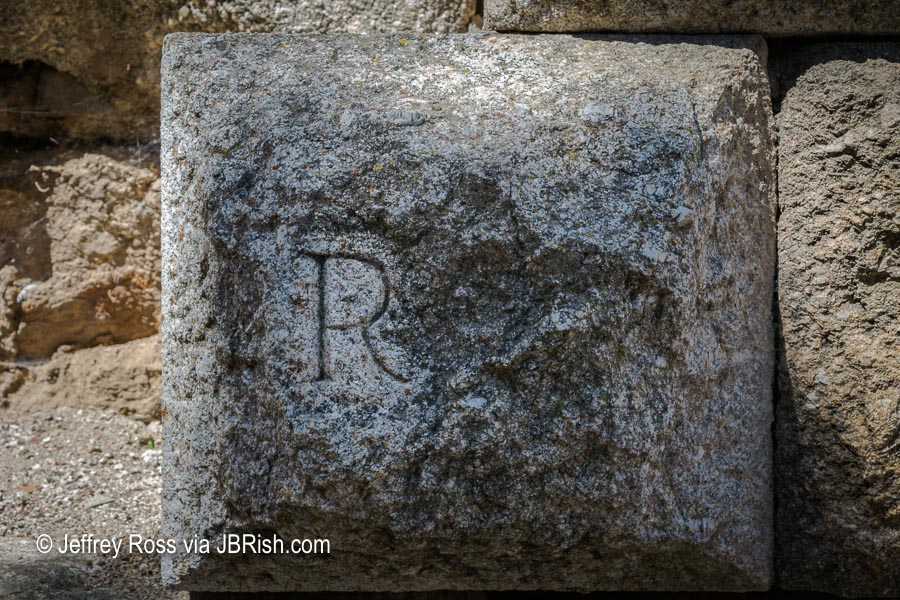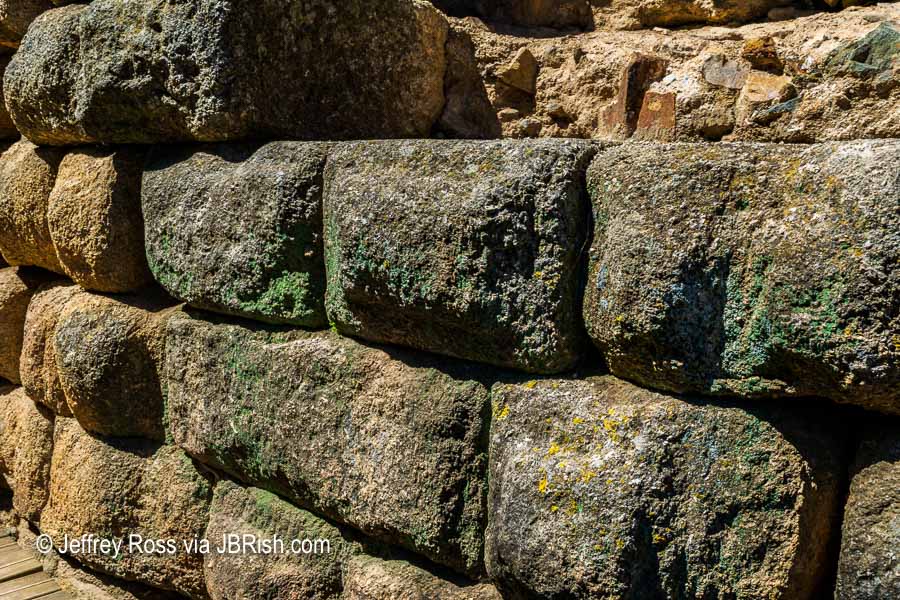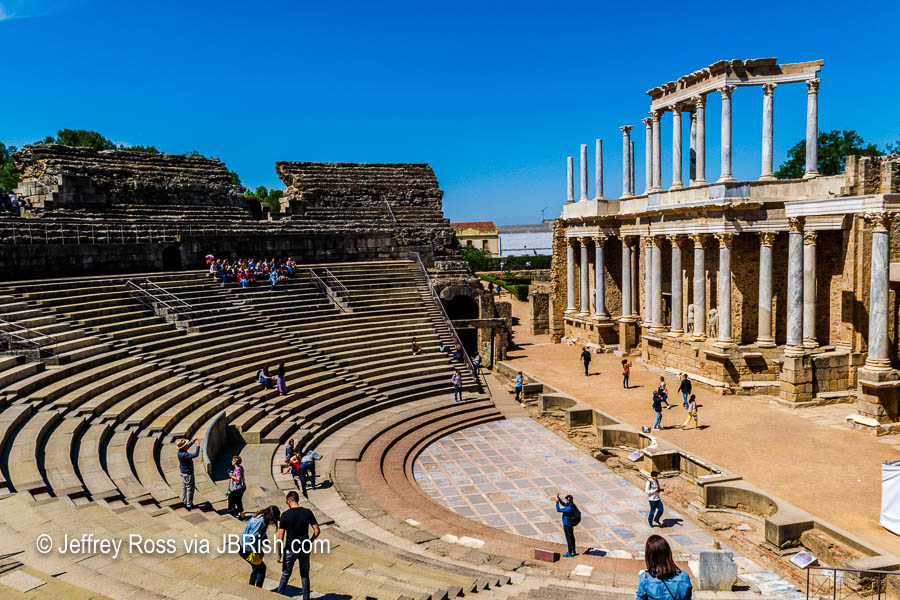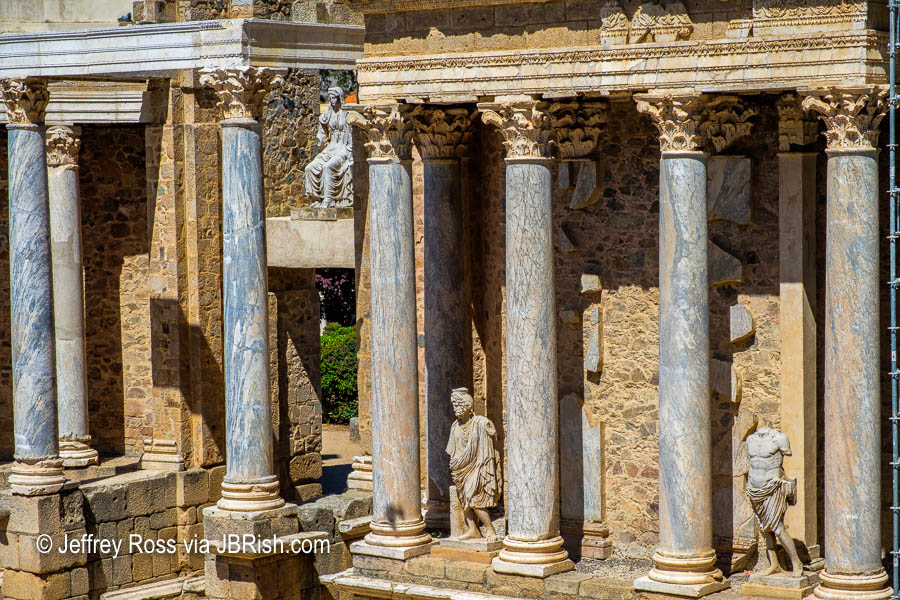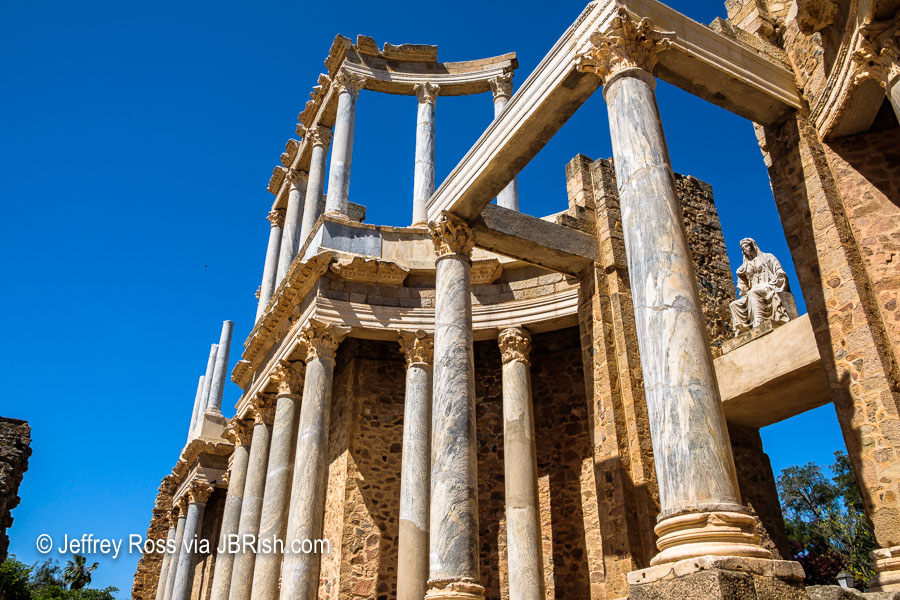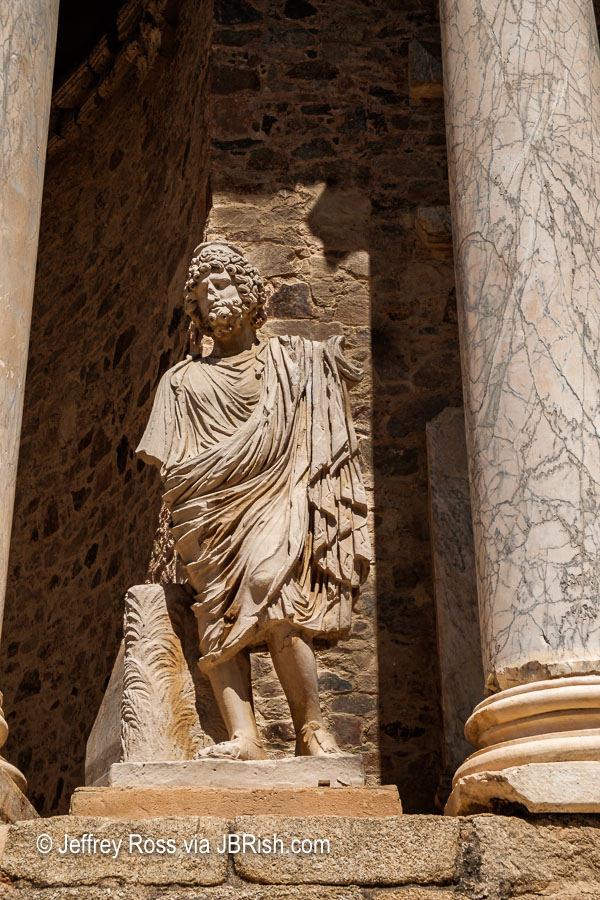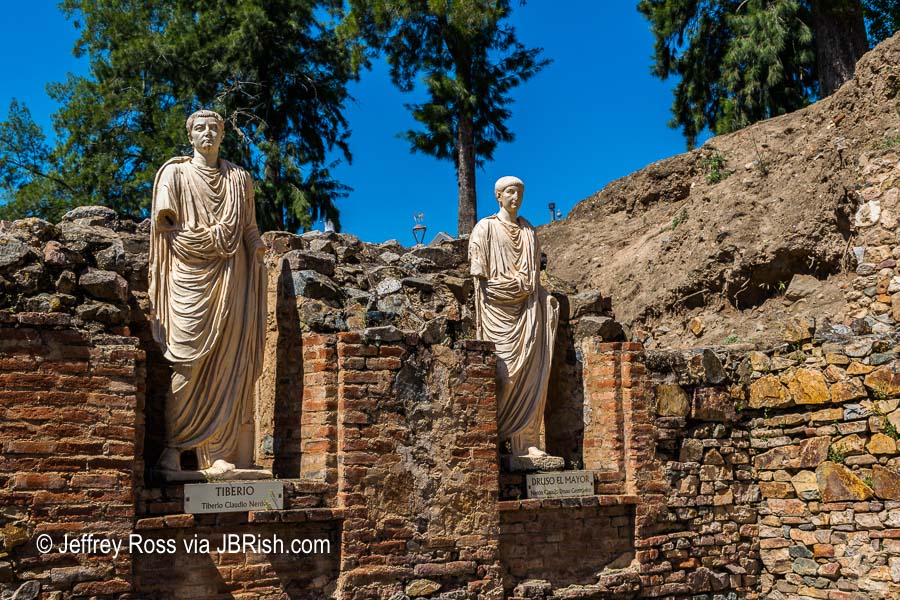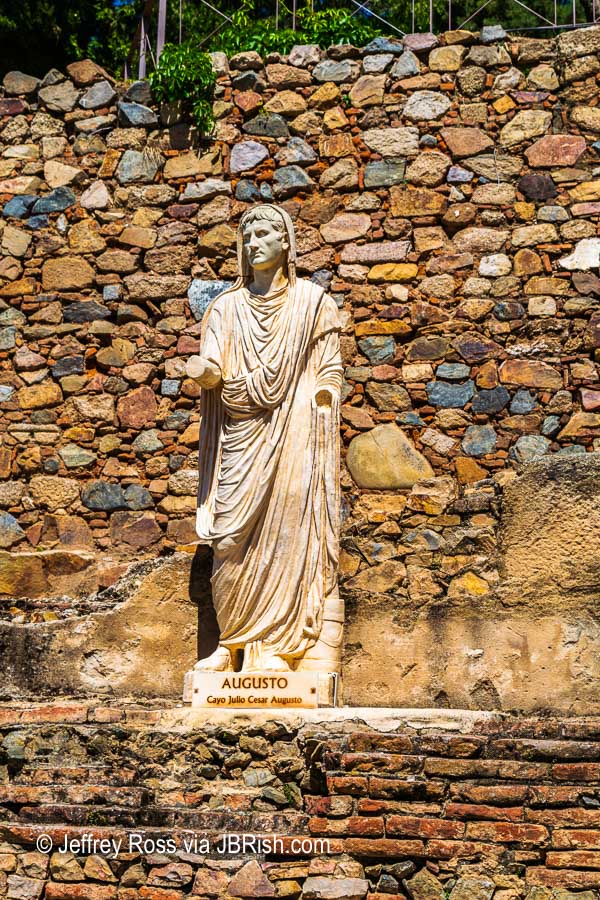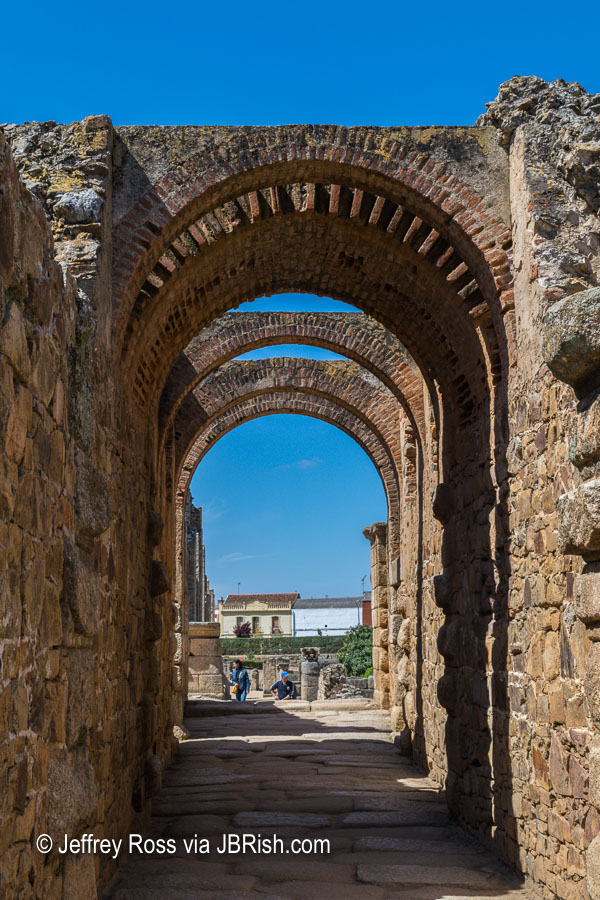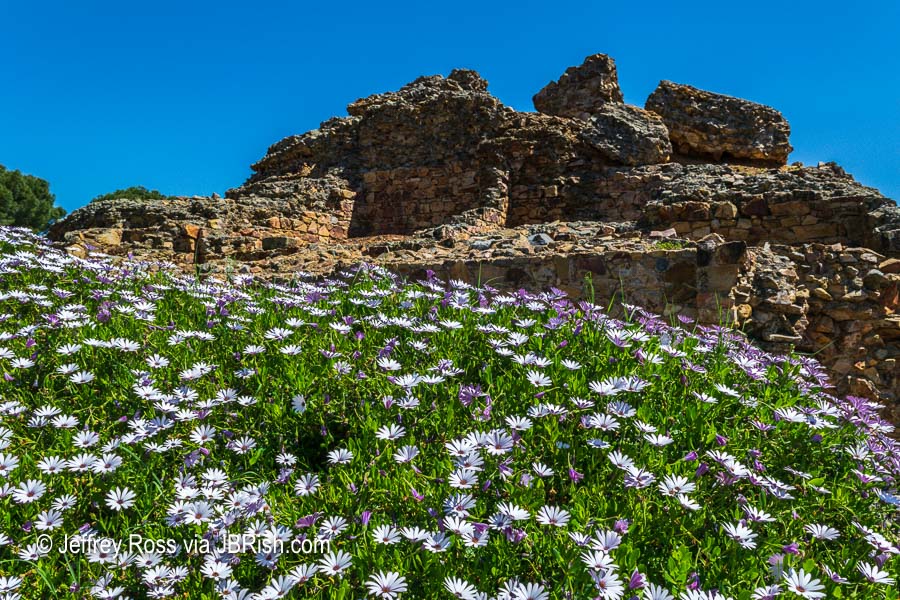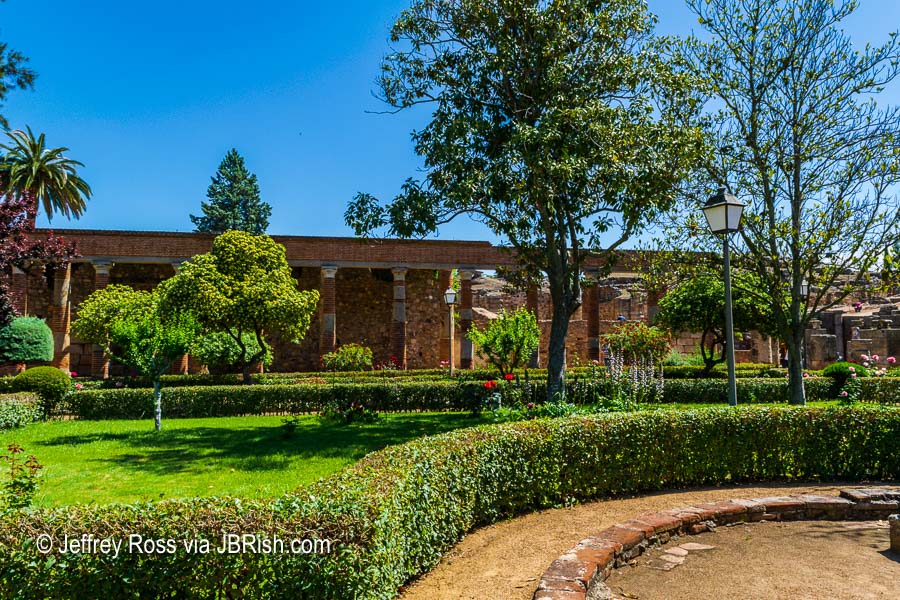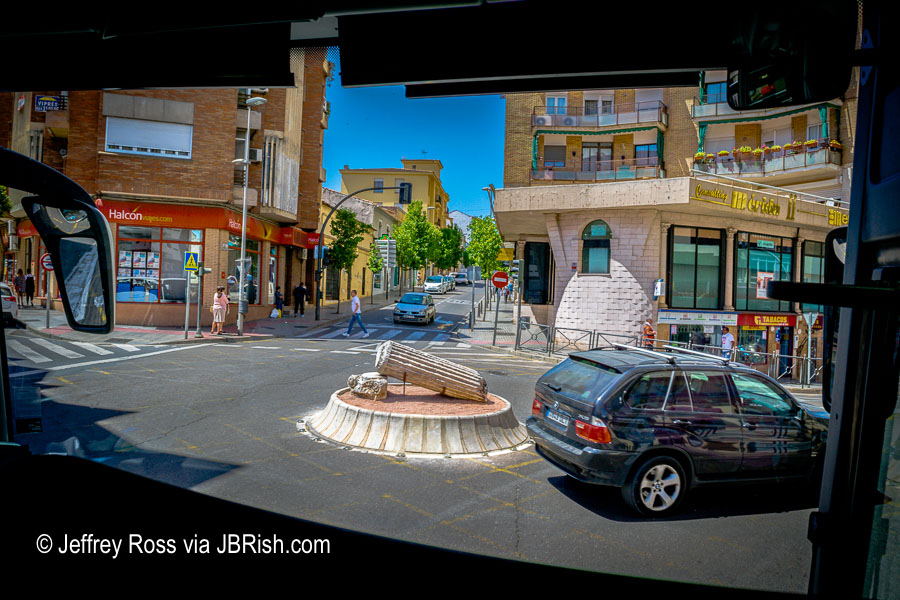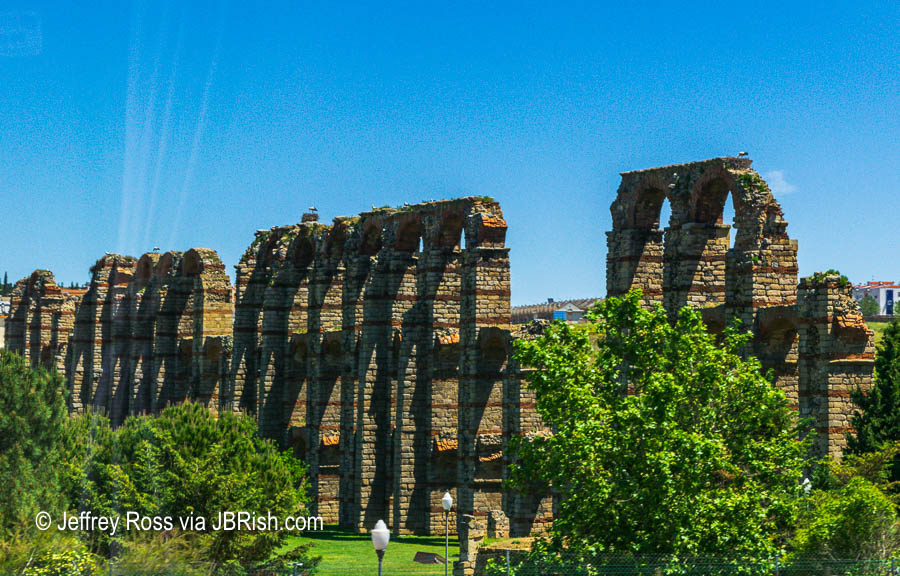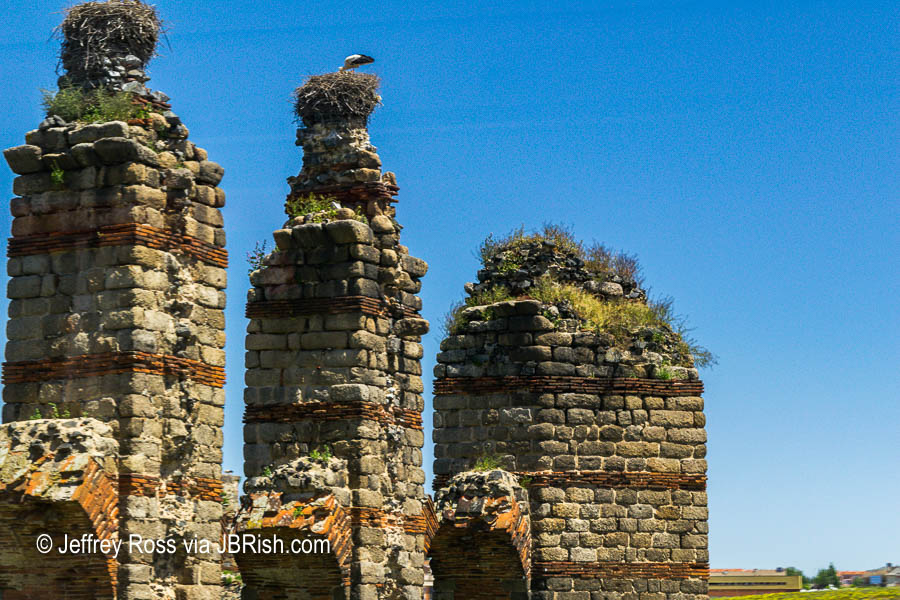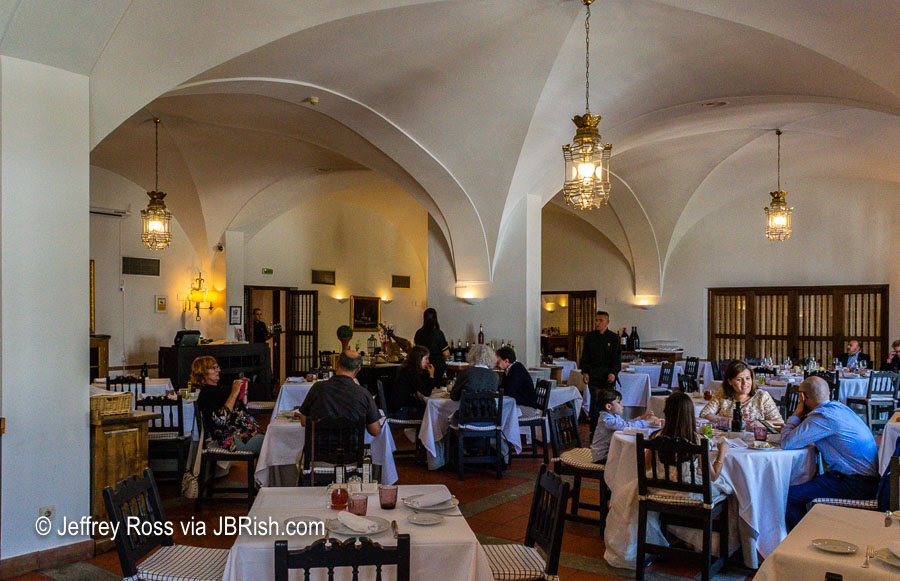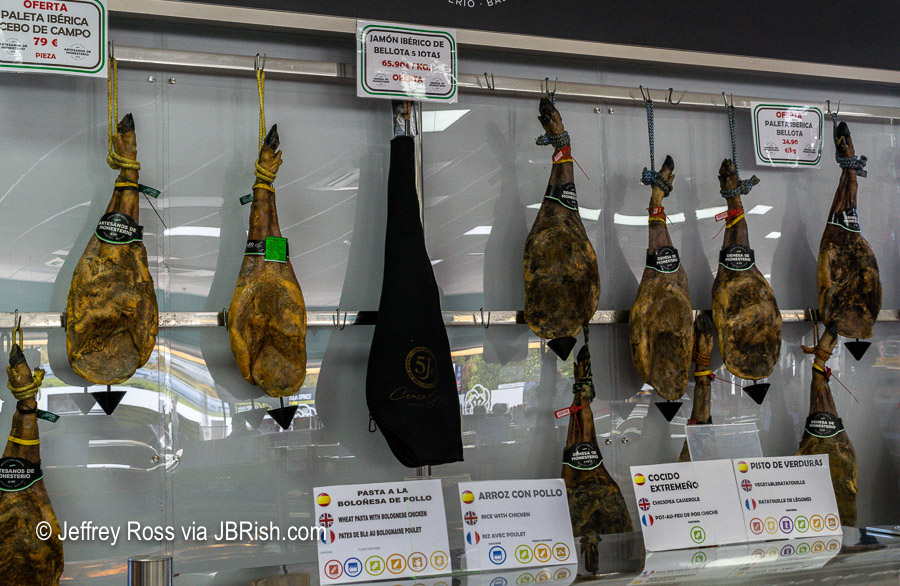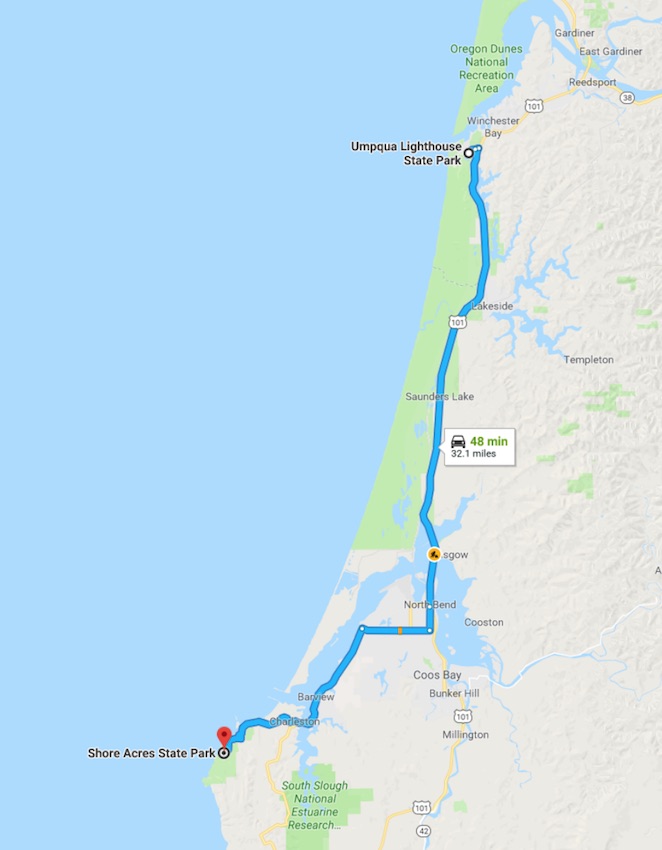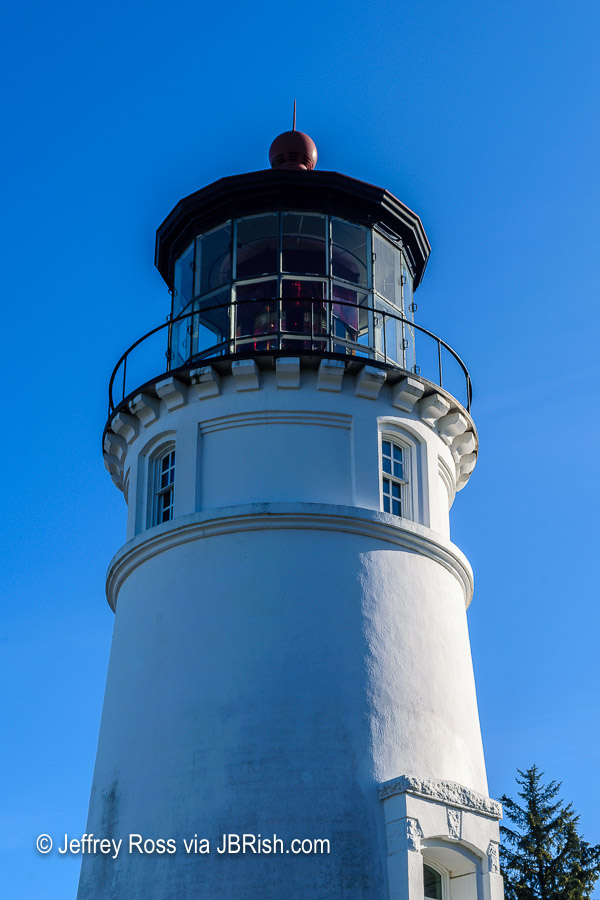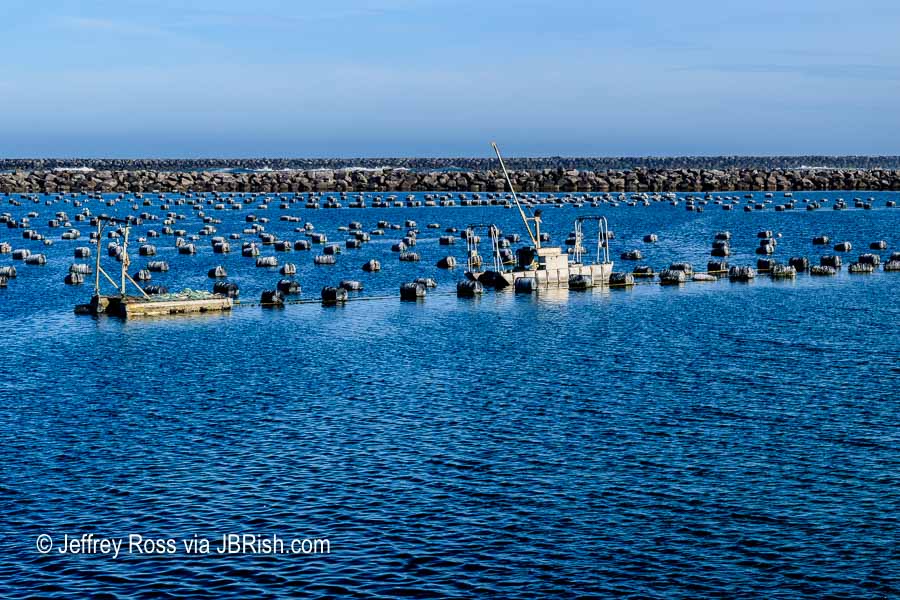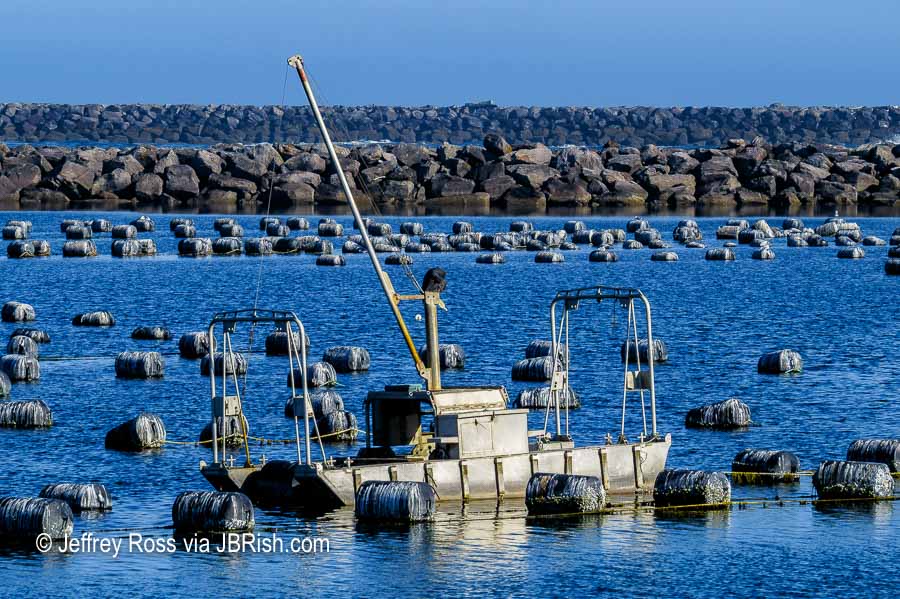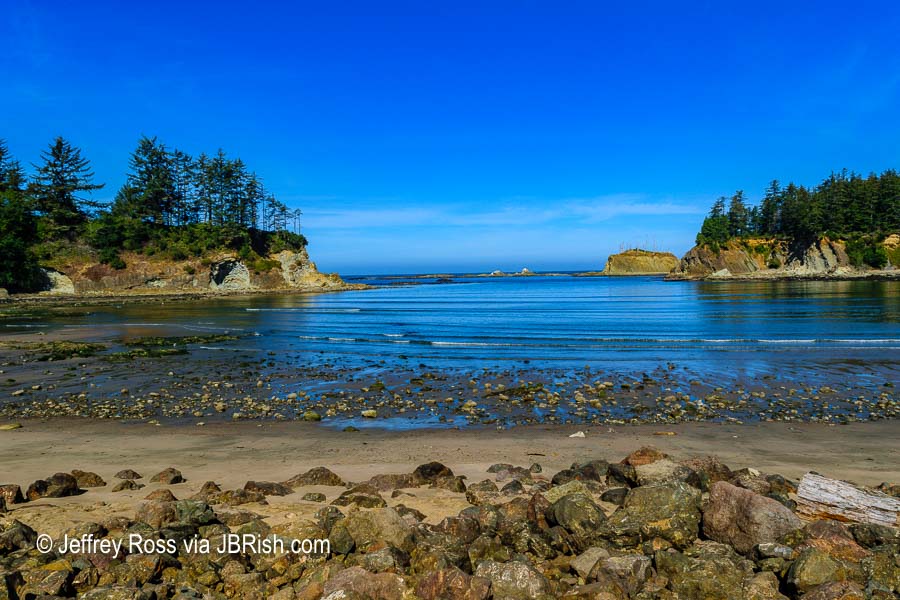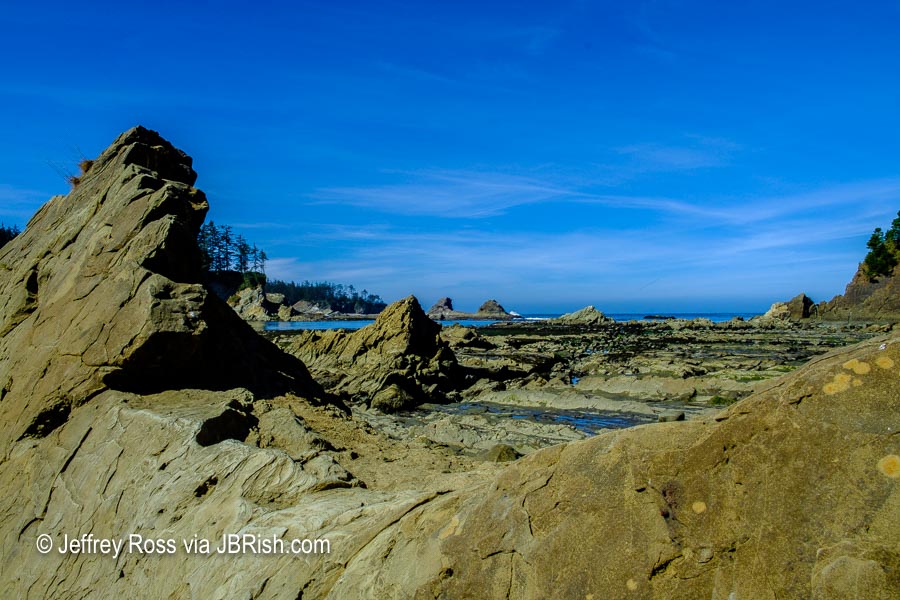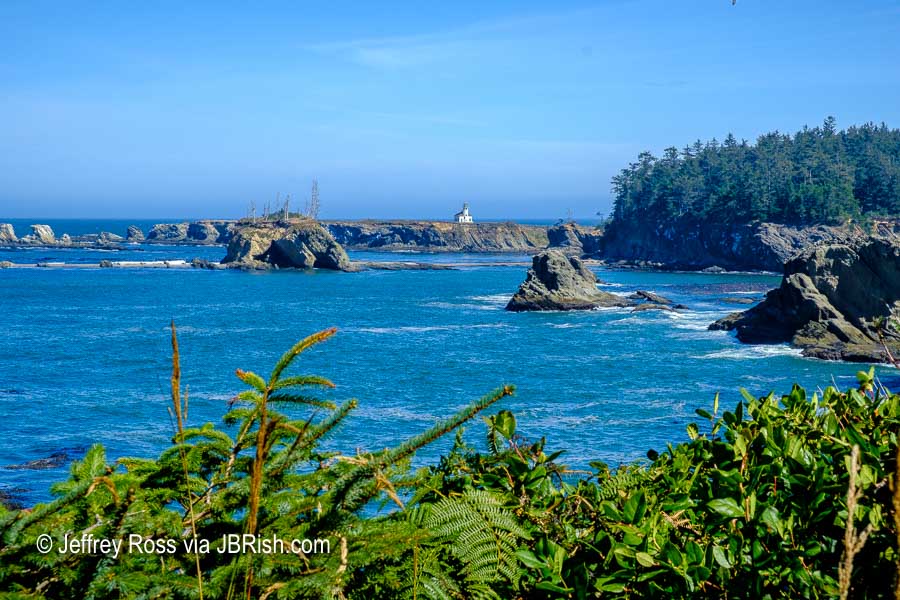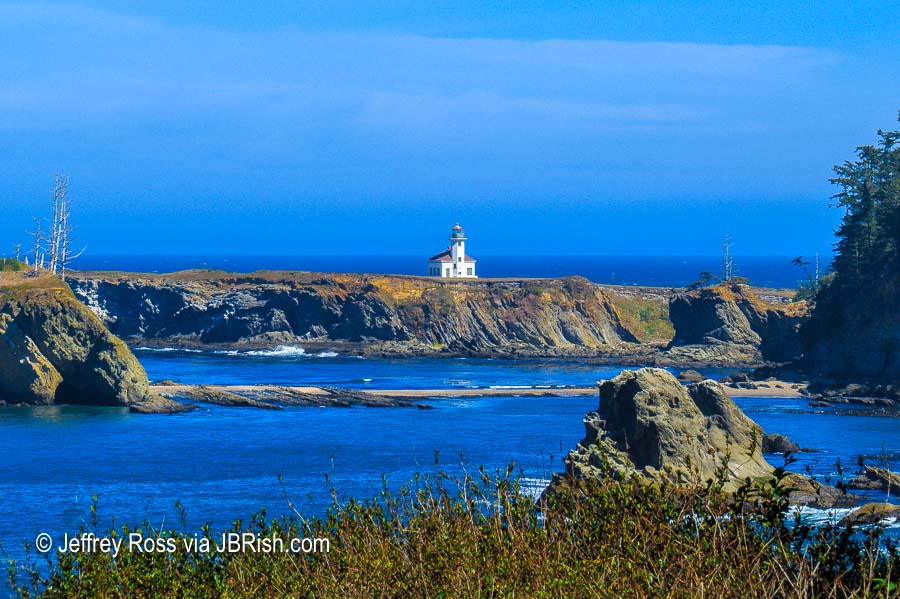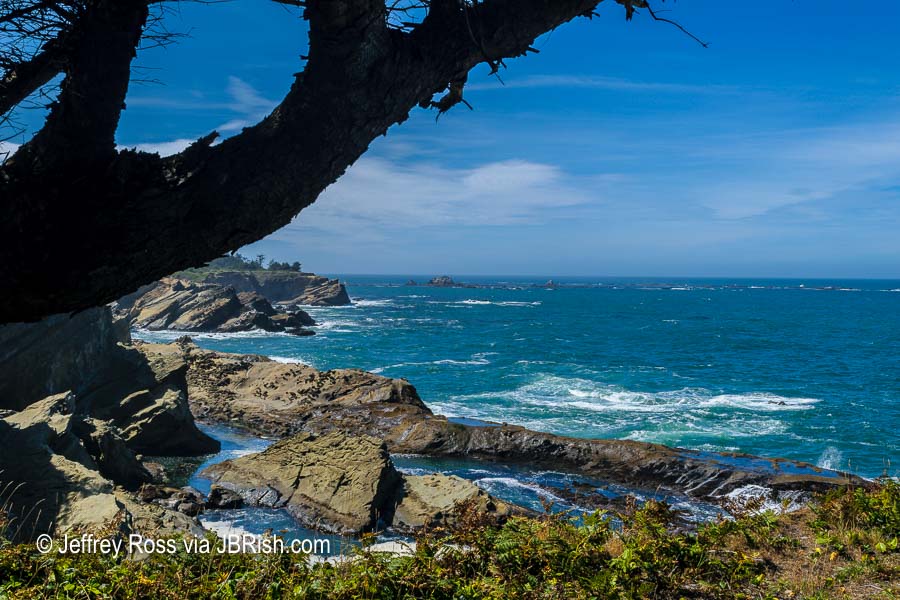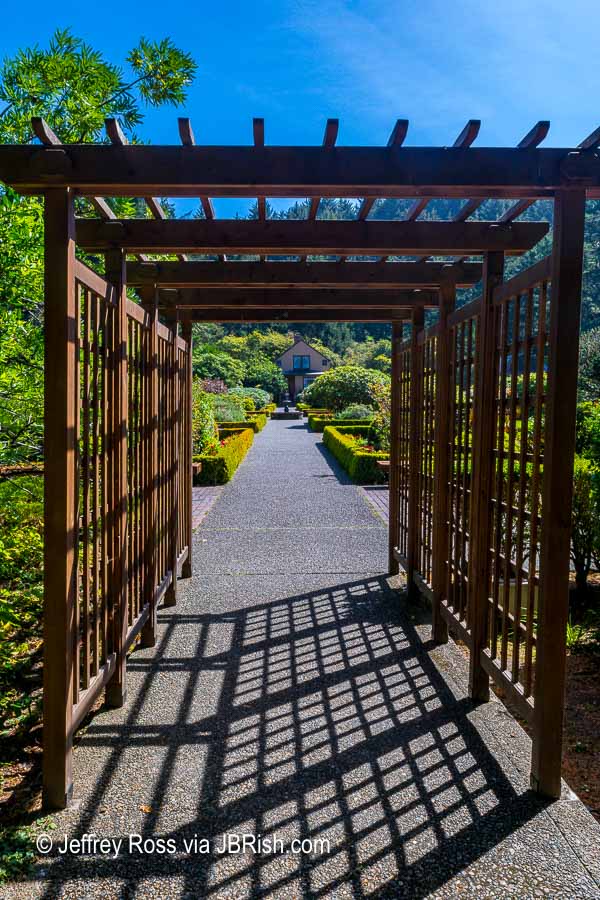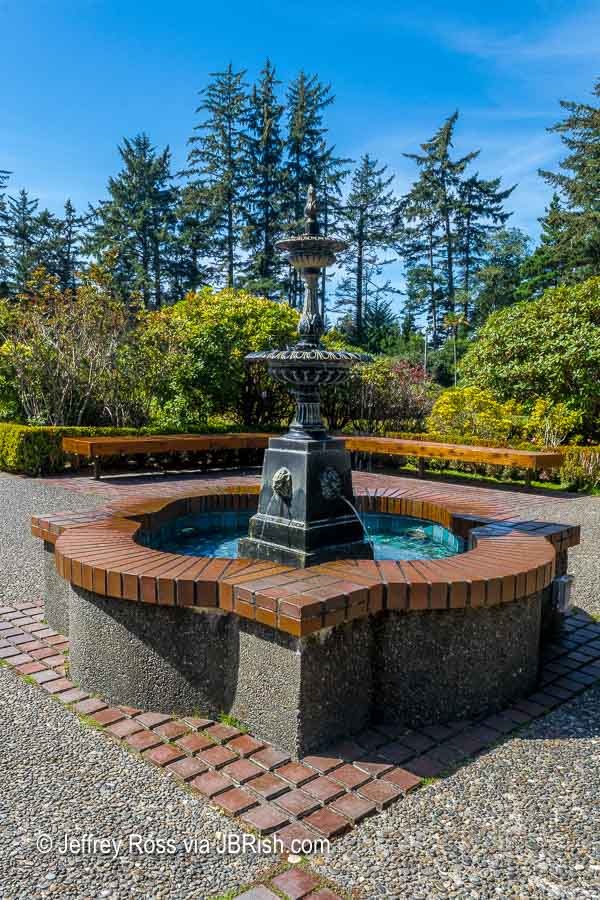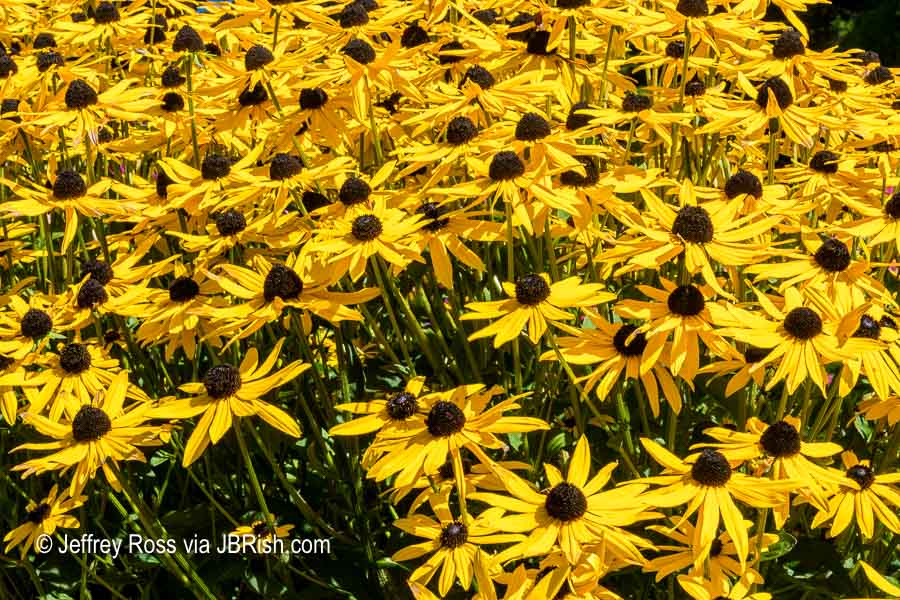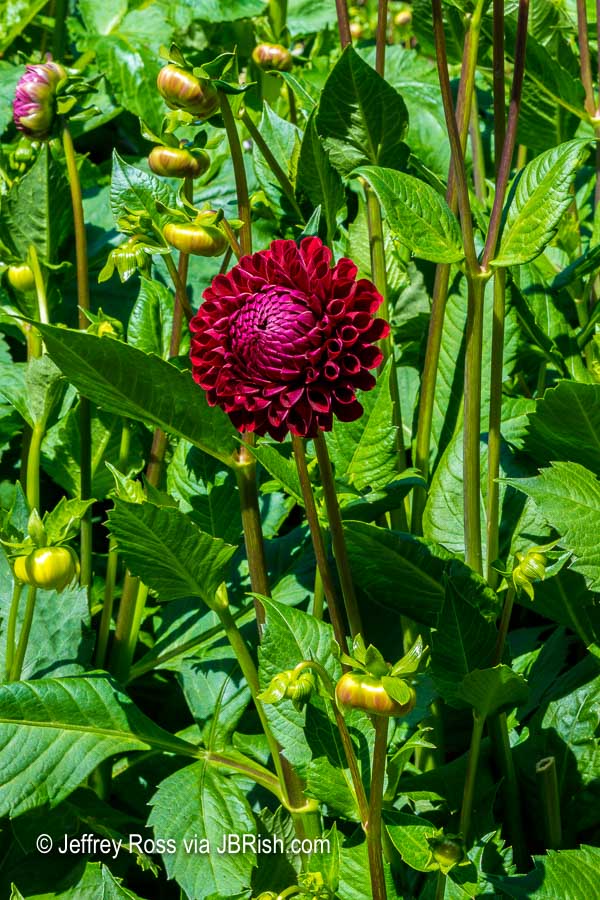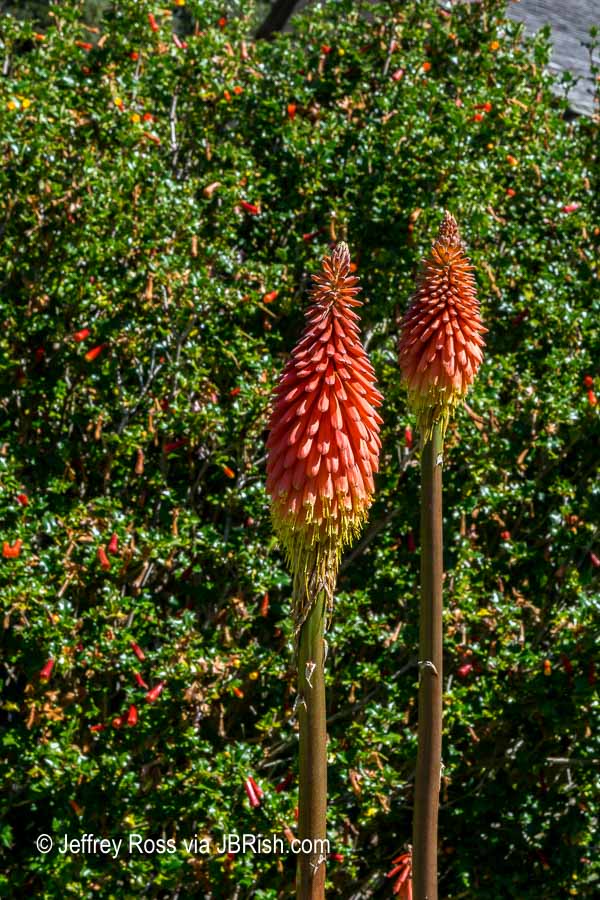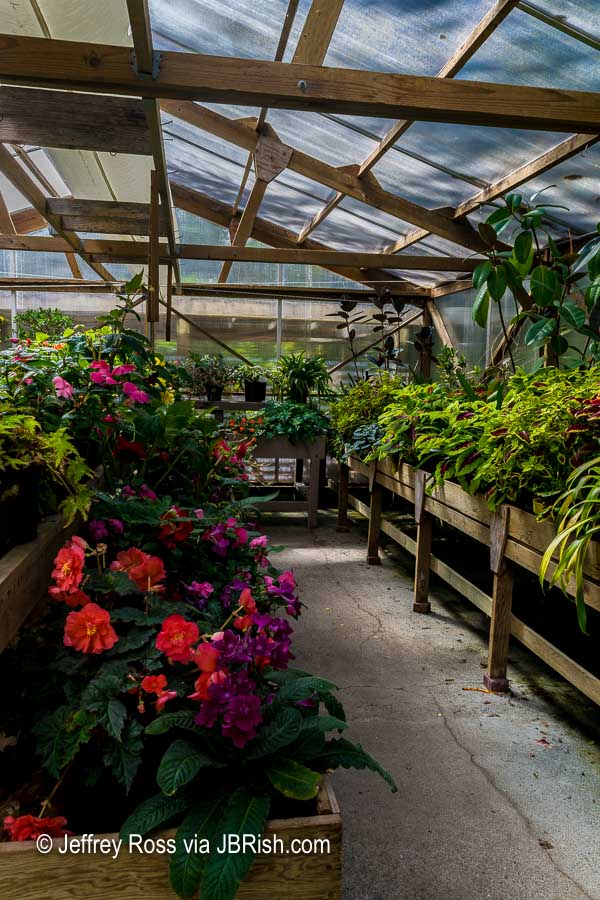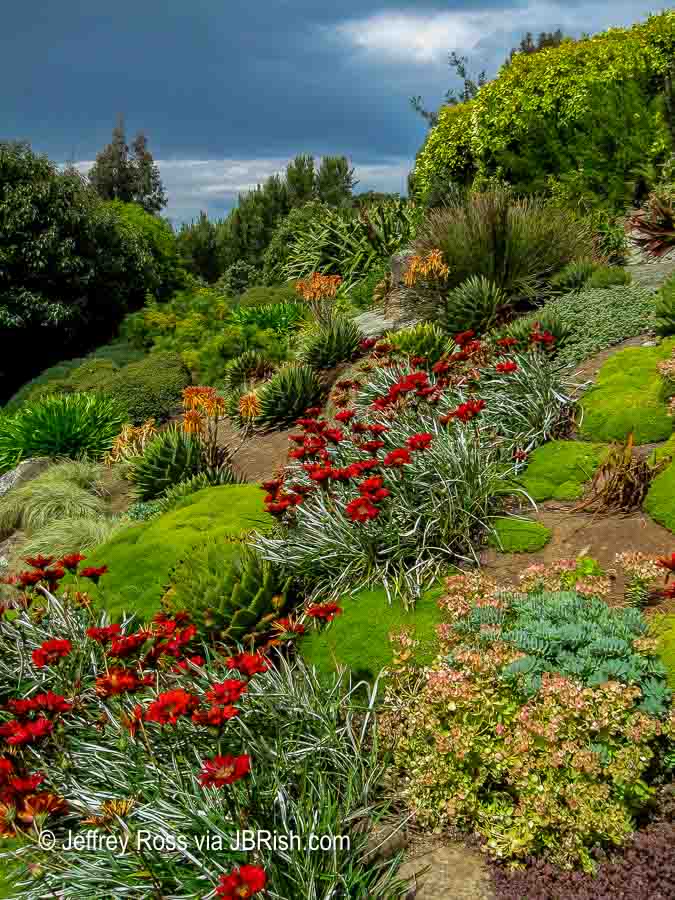If you spend any significant time in Madrid, sooner or later you will find yourself in or near the Plaza Mayor located in one of the oldest parts of the city known as the Hapsburg district thus named because it was governed by the Hapsburg Dynasty from 1516–1700. This is the general area that has the Botin restaurant mentioned in my previous post. The plaza is a symmetrical, building-lined square which at first may appear to be completely enclosed.
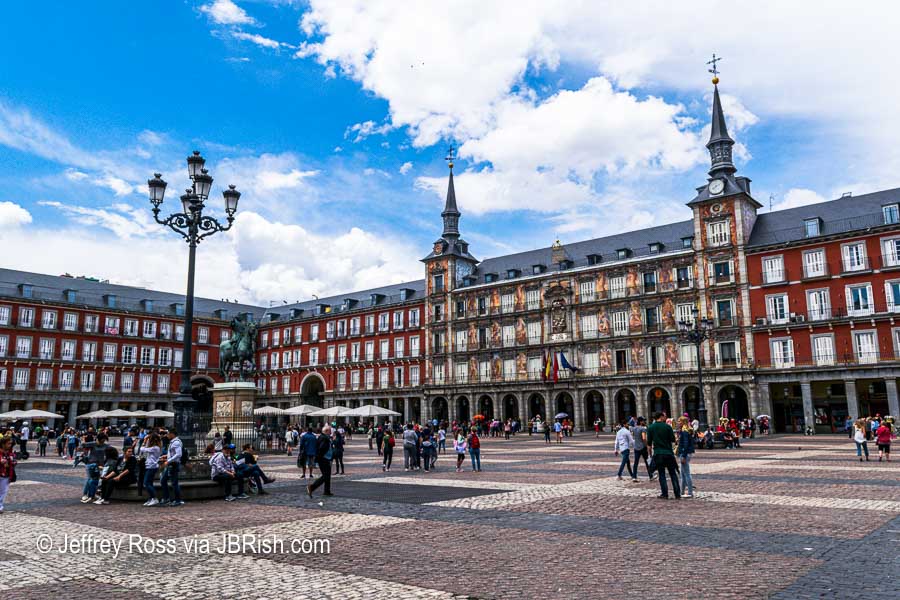
Visitors to the plaza enter through strategically placed arcades.

As a chief tourist destination it is a natural stage for street performers and artists. For a fee, this headless military officer will gladly pose for a picture.

We visited the square on two occasions and there was ample tourist traffic and activity to make it an interesting stop. Some readers may have read about the love lock fence in France. Continuing this tradition, Madrid has its facsimile surrounding the lamp post in the picture of the arcade above.
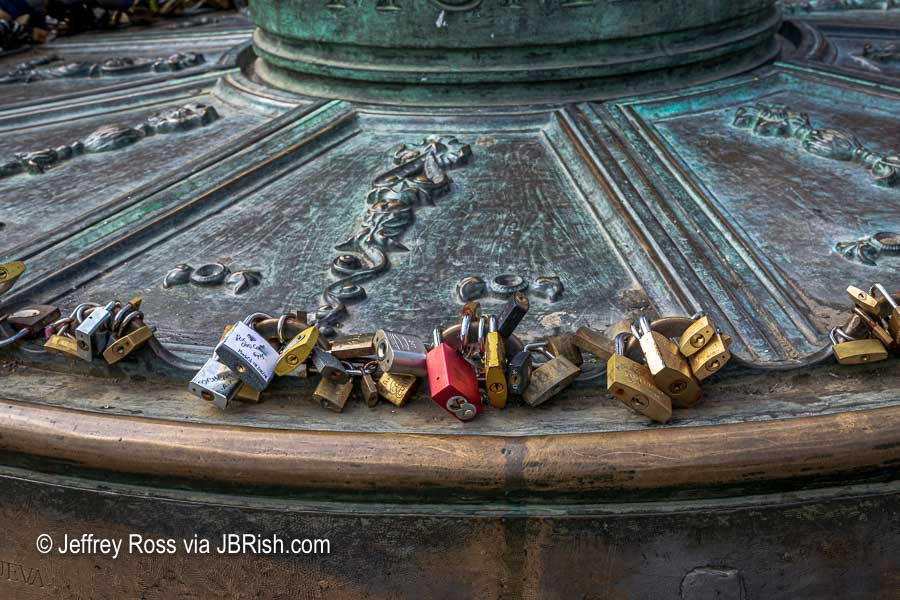
During our visit to Madrid there was an art installation throughout town highlighting sculptures reminiscent of Diego Velázquez’s Meninas which are featured in his paintings at the Prado Art Museum in Madrid. More information about Las Meninas

In parts of the city that were under construction and the environment was not safe for the actual Meninas, they had simple representations to include as many locations as possible.
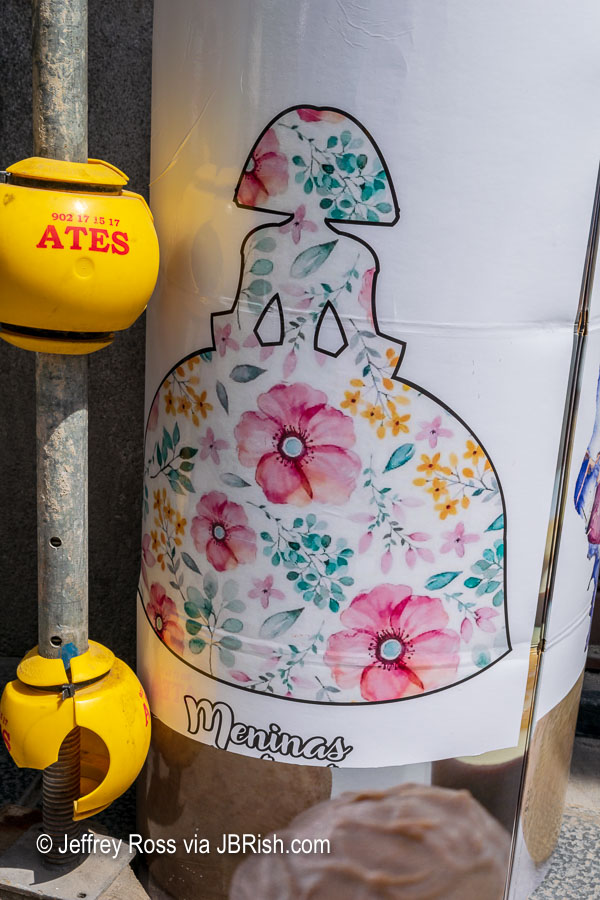
Just west of the Plaza Mayor is another interesting stop that will not disappoint.
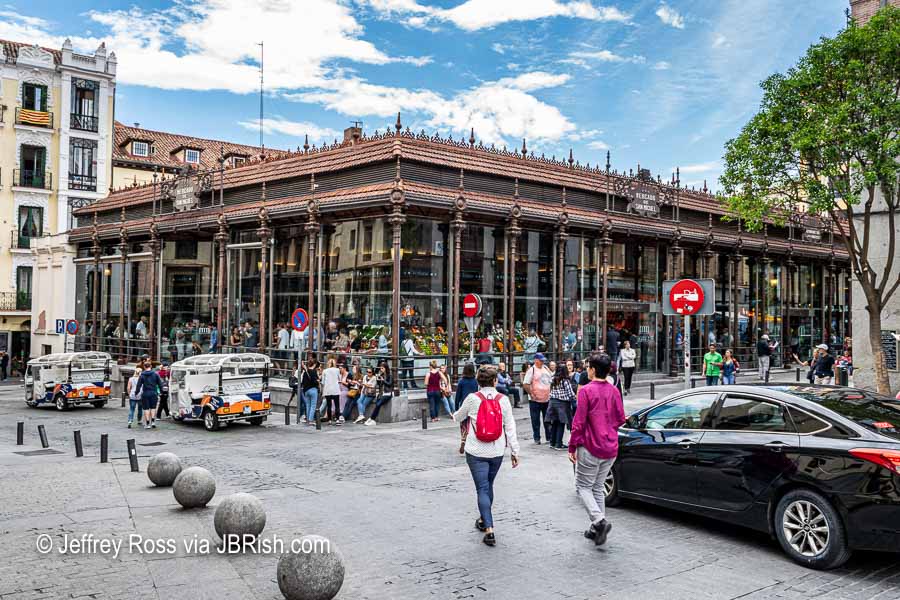
The Mercado San Miguel (Marketplace) is more than a hundred years old and started as a wholesale food market.
Today, this historical building stands out as one of the world’s main gastronomic markets. It allows visitors to experience the essence and most significant flavors of every corner of Spain.
From the finest Iberian ham and freshest fish and shellfish brought in daily from Galicia, to Mediterranean rice dishes and the most exquisite cheeses from Castile, Asturias and the Basque Country – at the Mercado de San Miguel, you’ll find all the highlights of Spanish cuisine. Spread out over more than 20 stands, the common denominator here is a commitment to high-quality tapas and pub fare.**
**source:
Fruit presentations are hand crafted providing the most pleasant displays and hopefully encouraging more purchases.
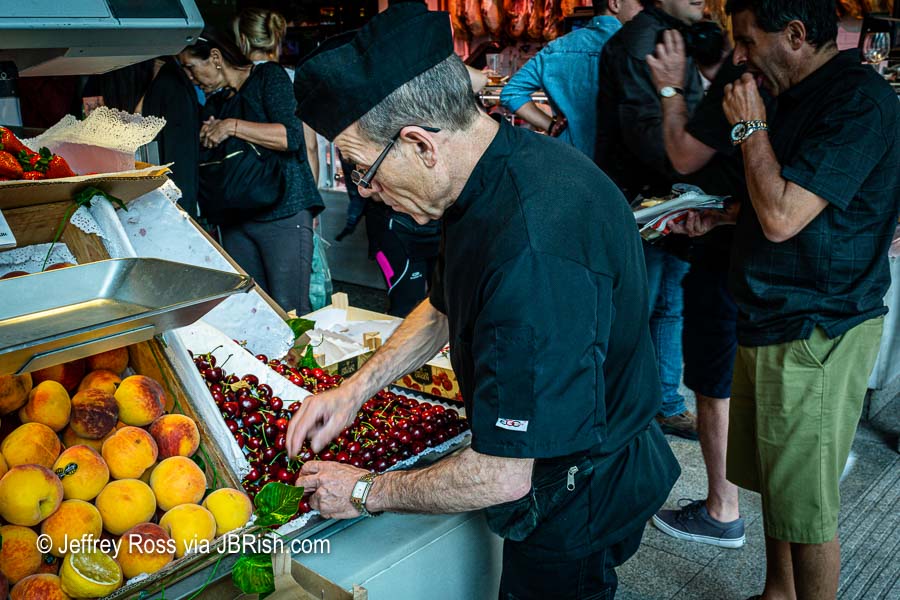
There are gastronomic delights for every taste and of almost any imaginable food group.
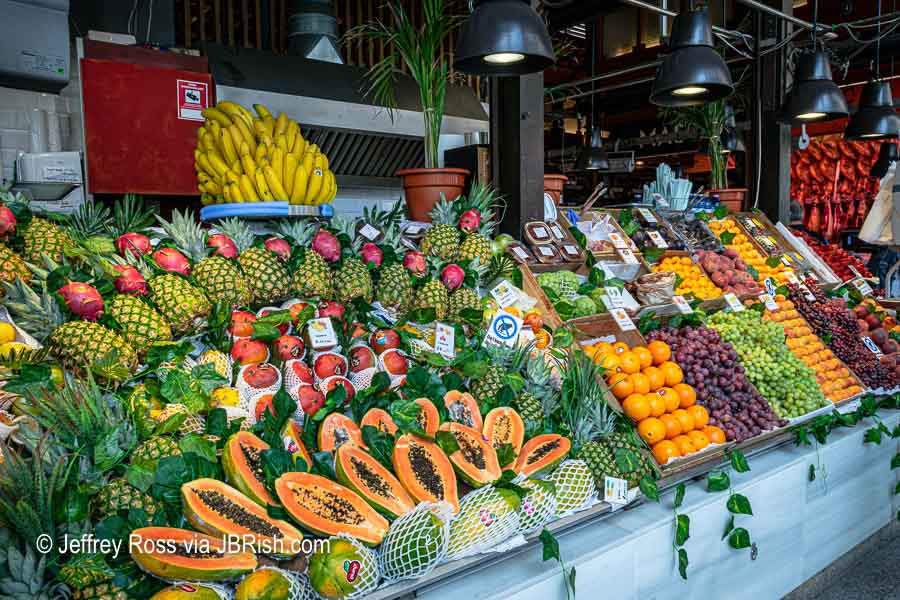
Whether it is Iberian ham …

or a memorable vintage, the Mercado has you covered.
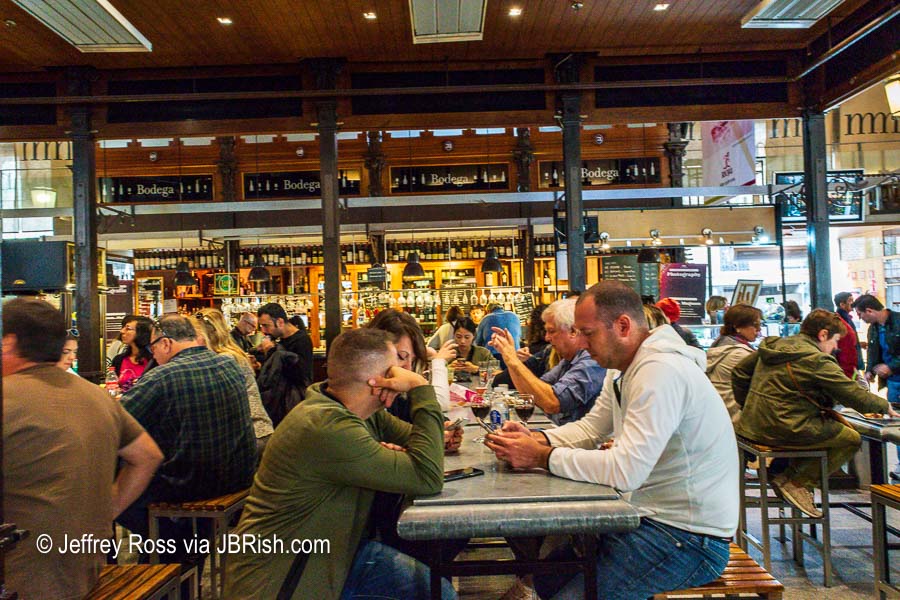
We enjoyed this somewhat snarky mileage sign reminding us how far away from home we were.

We always enjoy seeing how different cultures represent products or events that are similar to those we have in America. This advertisement for car security system or insurance with chains placed around a parked automobile was quite clever. [Sorry the shot is a bit blurry as it was taken from our moving bus!]
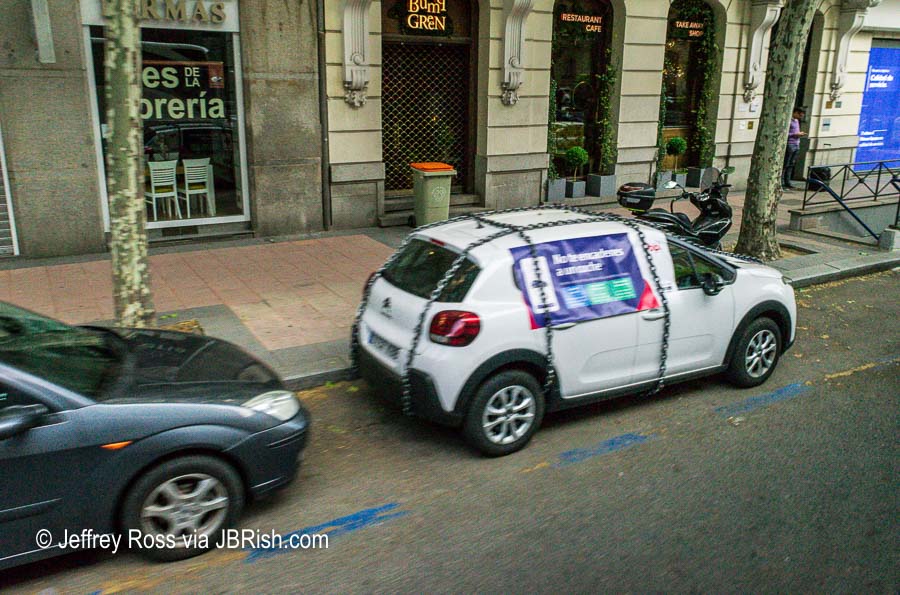
We do quite a bit of gardening at home and naturally we gravitate to gardens whenever we have a chance to visit other destinations. The Parque (Jardines) del Buen Retiro is a large park with many displays of flowers, trees, shrubs, etc.
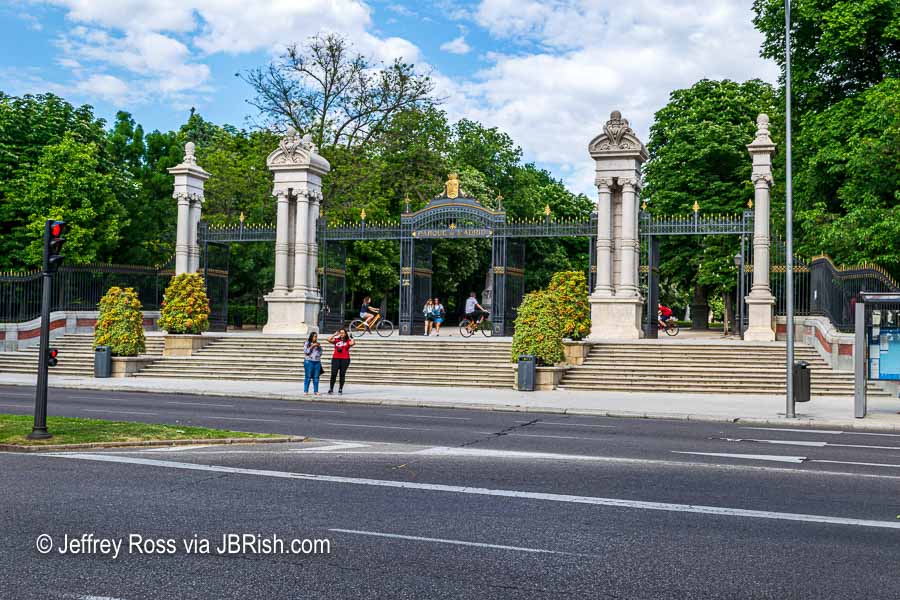
There is ample space to relax and enjoy the green atmosphere.

Amid one of the water features, there was a family of ducks!
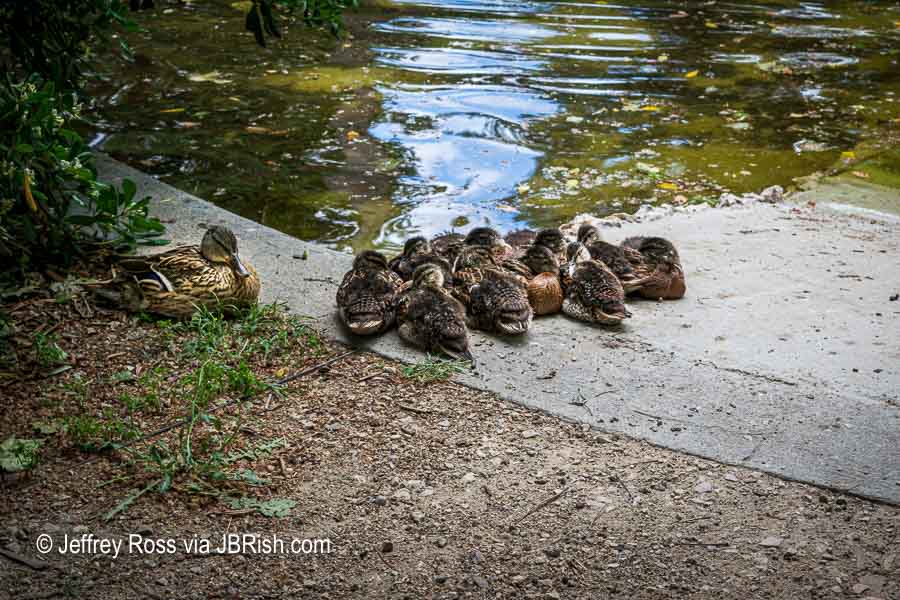
One of the hubs in the park was a large fountain with a sculpture of Lucifer which is somewhat remarkable…
“The country’s capital city holds unique bragging rights for having what is commonly acknowledged as the only public monument to the Devil himself.
Located in the gardens of the expansive Parque del Buen Retiro, this statue is 666 meters height above the sea level. The Fallen Angel (Ángel Caído) is set atop a marble pillar in the midst of a fountain decorated with sinister demonic entities and some rather miscast reptiles. Lucifer is depicted at the moment he is cast out of Heaven, as inspired by a passage in John Milton’s Paradise Lost.
source:
This location is also a place to acquire snacks and perhaps take a restroom stop!
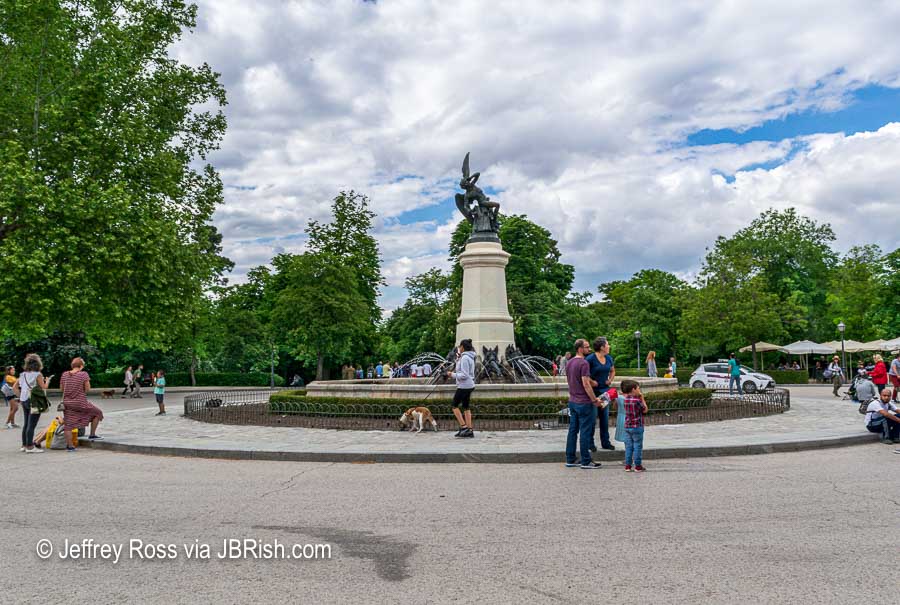
A bit farther down the walkway there was an impressive rose garden.
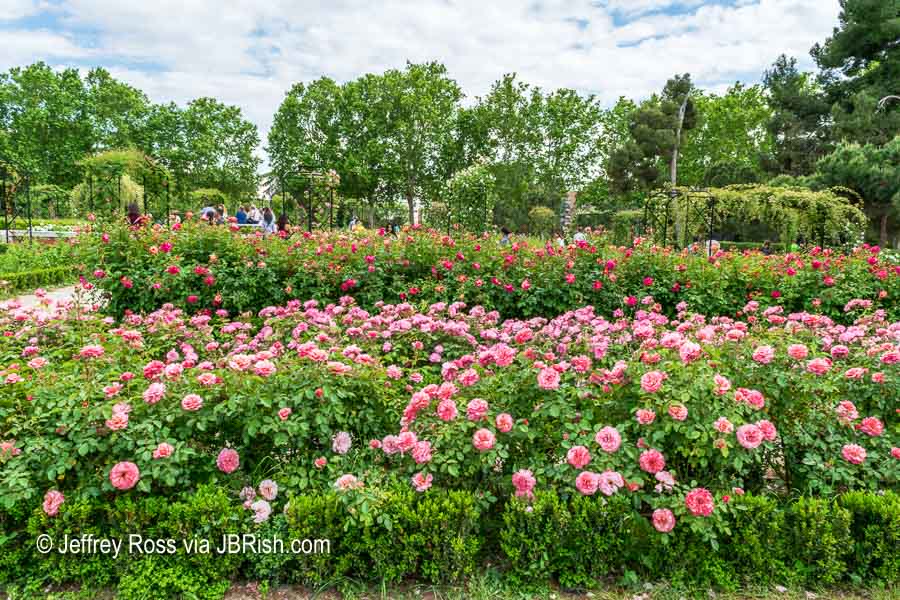
After admiring a dog or two, and having had our fill of plants and flowers for the day, we started to head back to our hotel. On the way, we walked through a residential section of town that had a few quaint, small restaurants like this eatery using ceramic hats to cover the al fresco place settings.
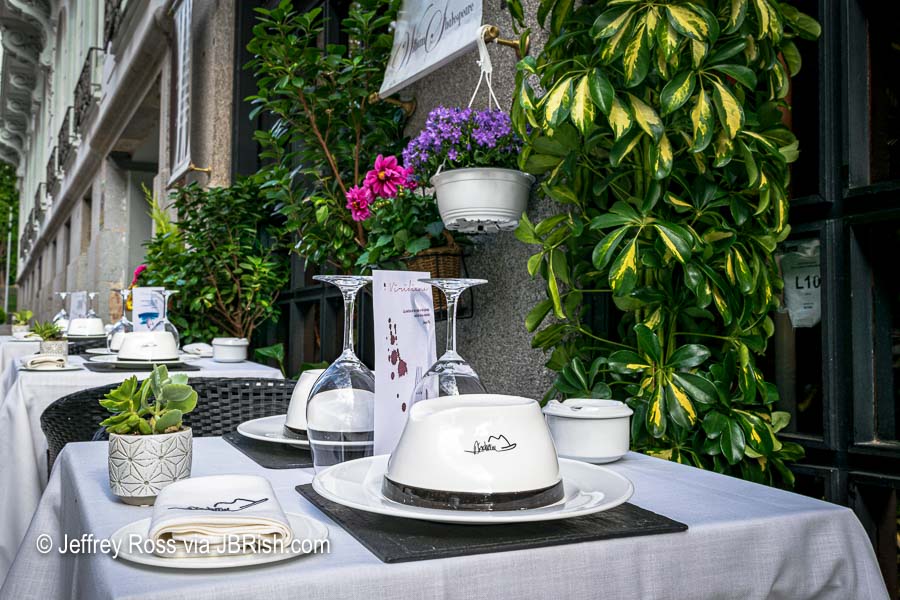
Always a sucker for impressive, old-looking wooden doors, I had to take a picture of this beauty.
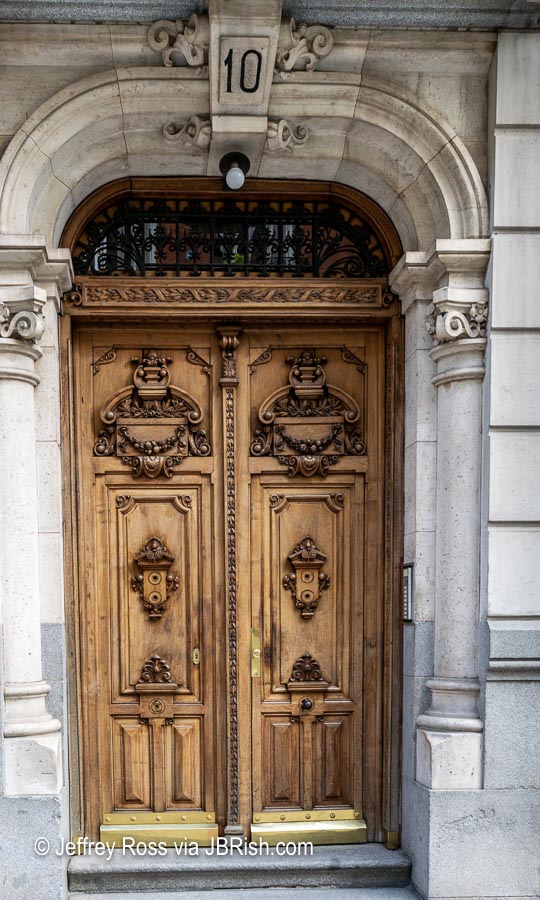
Crossing the street near the Prado, we encountered this LGBTQ traffic signal.

This was our last day in town and we were going to make the most of it. We were eager to explore the neighborhoods near our hotel even those that were a bit of a walk away.
This interesting sign for a Cervantes restaurant was just a few blocks from our room.
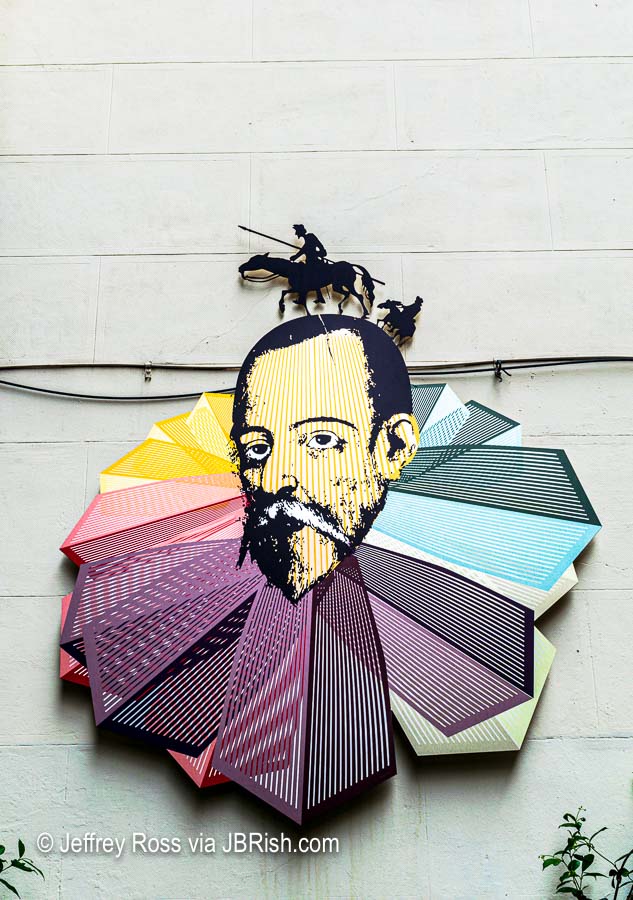
We made one last dash to the Puerta del Sol or Gate of the Sun (not far from Plaza Mayor), another very busy, touristy stop in center of Madrid. This public square has the distinction of being the starting point for the six major roads emanating from the Puerta del Sol and there is actually a marker denoting kilometer zero for those streets..
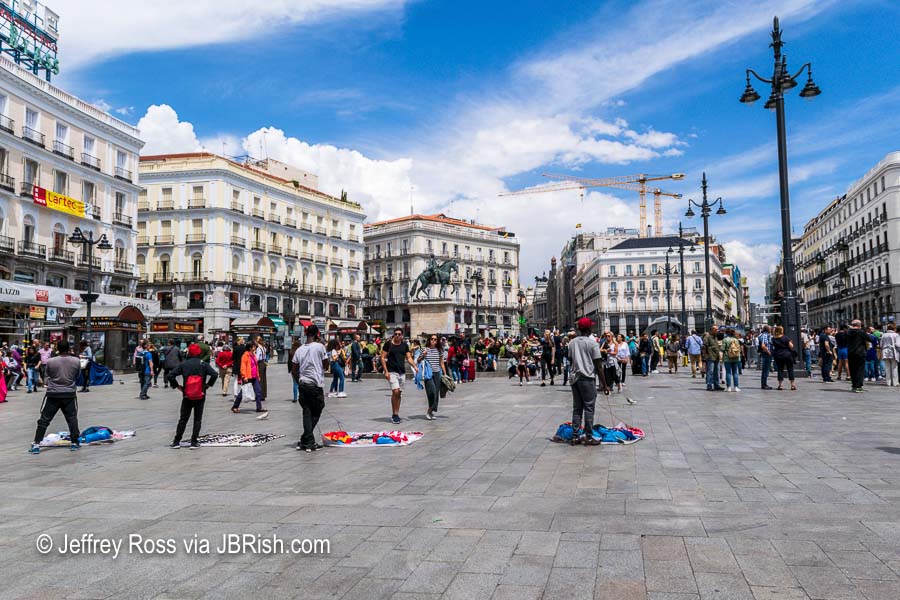
One of the most popular statues in Madrid is “El Oso y El Madroño” (the Bear and the Strawberry Tree). The reasoning behind this particular statue is a bit murky, but you can read about it at the link below:
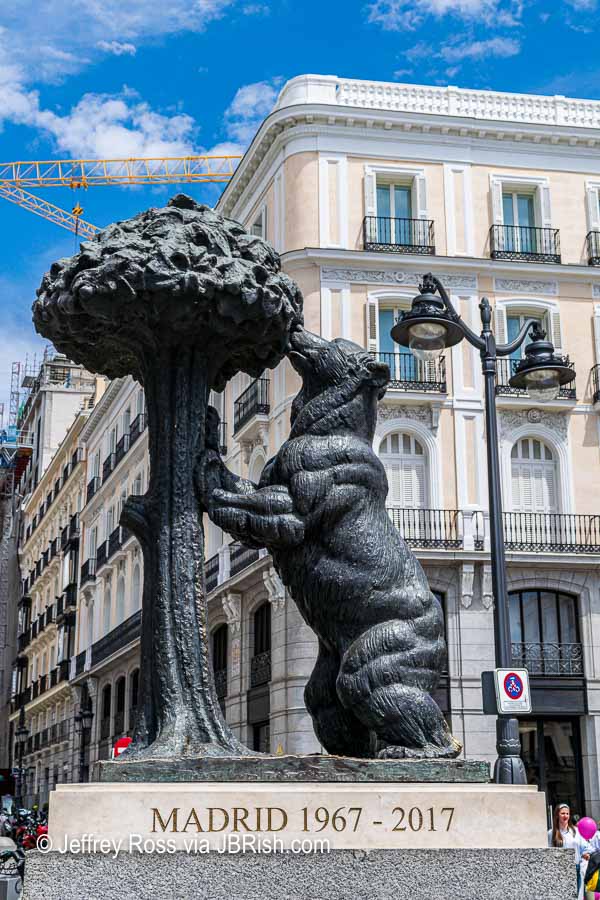
We certainly had our share of adventures in Madrid and it was now time to call it the end of another day.
**********
***************
Continue reading about our trip to Portugal and Spain.
Read more Hiking and Exploration posts HERE
**********
All original content on this blog is copyrighted by Jeffrey B. Ross with ALL Rights Reserved. While reference links back to JBRish.com are appreciated and encouraged, please acquire approval for any reproduction of original content from this website.
©Jeffrey B. Ross 2014 – 2019 – JBRish.com
